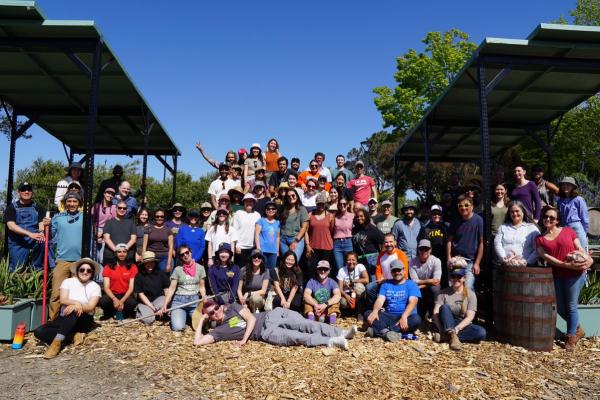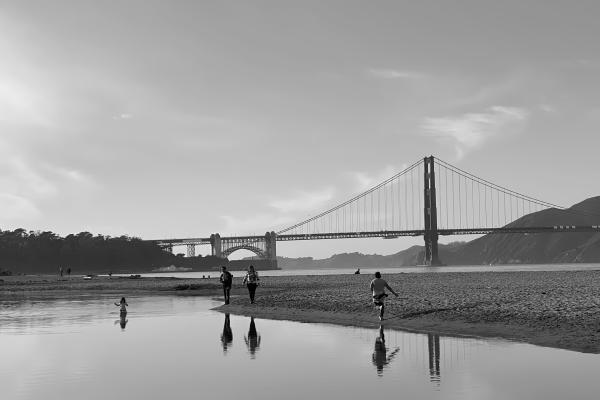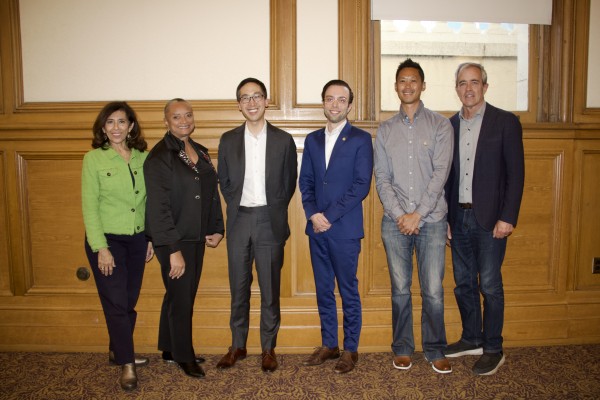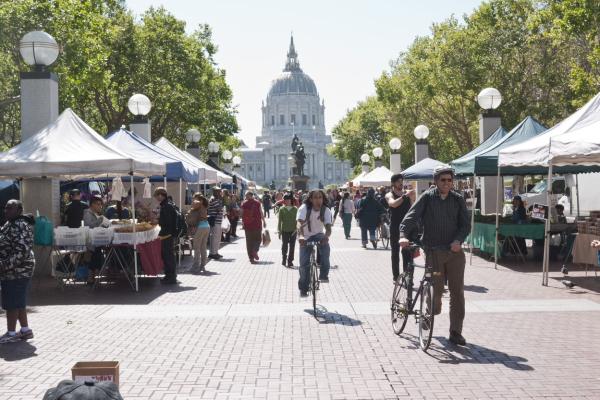Maria A.
Meet Maria Arteaga (she/her), the Social Media and Content Specialist at the Women’s Building since 2019!
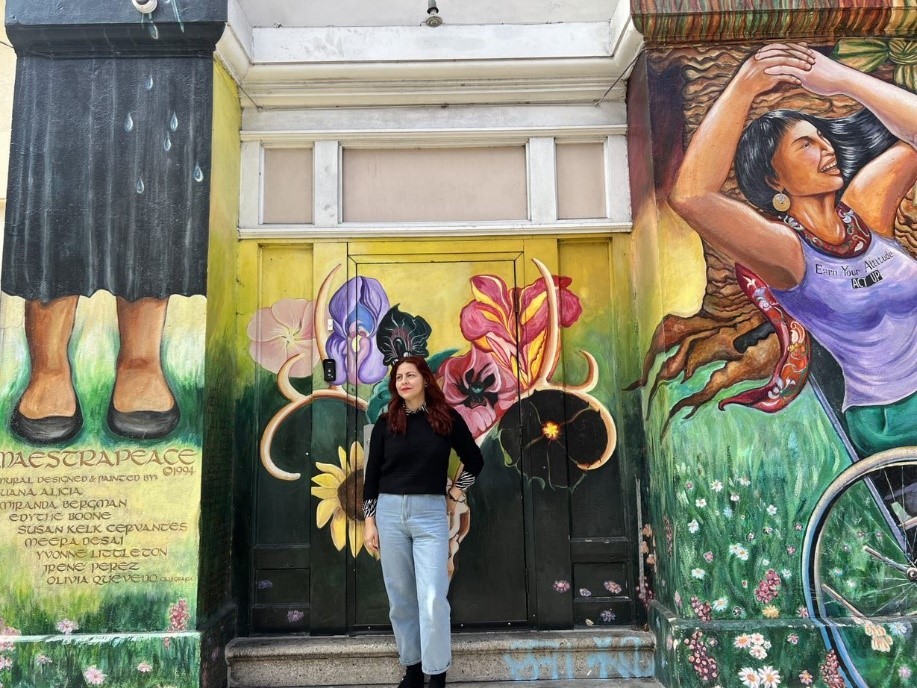
When Maria first moved to San Francisco, she saw a colorful building in the Mission decorated with beautiful murals of women, The Women’s Building. Maria, hailing from the global south and having experienced migration firsthand, has
been driven to work at organizations dedicated to advocating for and empowering female migrants. Maria wanted to connect with women in the Bay Area, leading to her volunteering at The Women’s Building, which is a critical cultural, arts, social service, and community space in San Francisco supporting the well-being of women and girls. Many social services and advocacy efforts that the Women’s Building provides are aimed at women newcomers from Latin America. Working there has been very rewarding to Maria because she sees every day how connecting women with social services and resources positively improves their lives. When arriving at a new place, finding a space to connect with a community, get resources, and communicate needs as a monolingual Spanish speaker is important to successfully transition and build a happy life in the Bay Area.
Working at the Women’s Building is invigorating for Maria because every day a passionate group of women work together to uplift their communities. Many of the Women’s Building staff have roots in Latin America. Working at the Women’s Building is a part of their journey to honor the different intersections of their identities and fight back against the oppressions they have faced, whether that is the challenges of being a migrant or a non-native English speaker. The Women’s Building cannot do this amazing work without the passionate staff and volunteers who move the needle forward!
Here are three simple ways you can get involved during Women’s History Month:
- Volunteer at a community organization near you. At the Women’s Building, many programs are volunteer-run, such as the annual tax clinics. Volunteers are vital to programs running and making a huge impact.
- Get involved with a community event. The Women’s Building hosts community fairs, which is a low-commitment way anyone can attend and get involved with.
- Advocate for social causes. The Women’s Building provides many ways to get involved with their community advocacy for affordable housing, immigration, and civic engagement. You can get involved by attending a march, demonstration, or signing a petition!
Learn more about The Women’s Building here: https://womensbuilding.org/!
Mural images courtesy of the artists ©1994-2009 Artists. All Rights Reserved. Thanks to artists Juana Alicia, Miranda Bergman, Edythe Boone, Susan Kelk Cervantes, Meera Desai, Yvonne Littleton and Irene Perez.
Minhthu L.
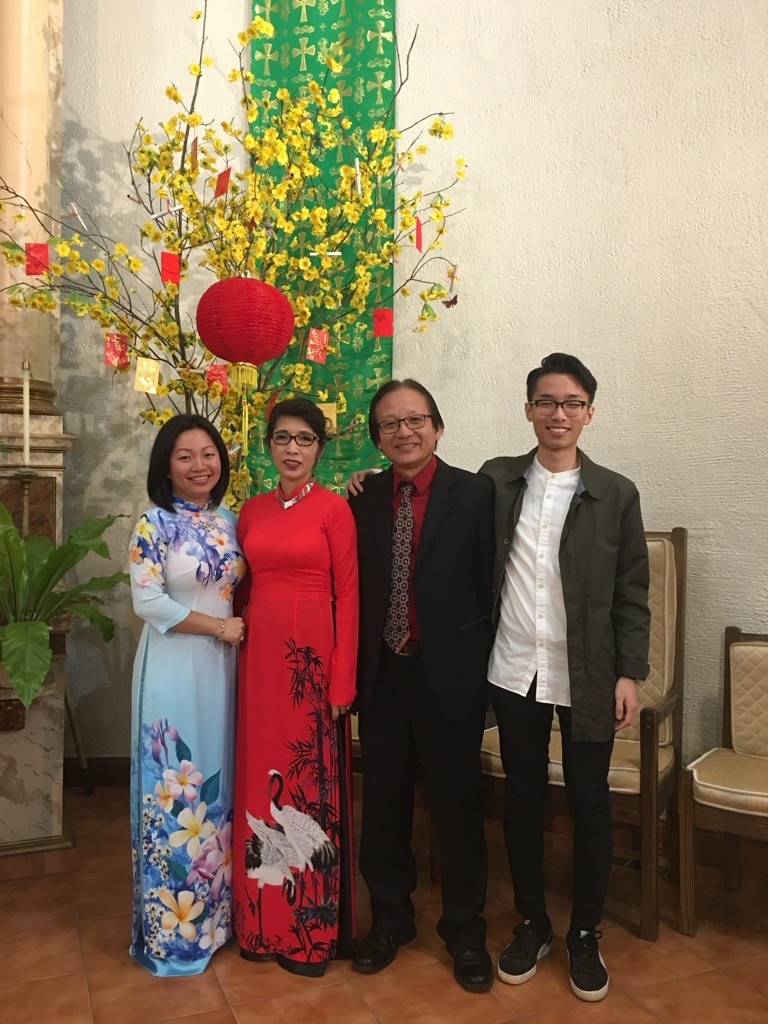
Meet Minhthu Le (she/her)! Minhthu is the Commercial Toxics Reduction Assistant Coordinator at SF Environment, supporting the San Francisco Healthy Nail Salon program, which aims to help SF nail salon workers and owners reduce their exposure to toxic chemicals in nail products!
Before joining SF Environment, Minhthu was a part-time nail salon worker and a research assistant studying chemical exposure from products frequently used in nail salons. Many toxic chemicals that nail salon workers and owners are exposed to daily can negatively impact their health, specifically their respiratory system, reproductive system, and possibly cancer in the long term. She worked with nail salon owners and workers to reduce toxic exposure and encouraged the use of safer nail products, increased ventilation, and personal protective equipment. These experiences further increased her passion for supporting vulnerable communities to make environmentally friendly decisions.
Minhthu grew up sharing traditional Vietnamese home-cooked meals with her family. Her mom loves cooking new dishes so the family can share a delicious meal at the end of the day. When she learned that PFAS, forever chemicals, in their non-stick cookware could negatively affect their health and cause abnormal thyroid hormone levels, reduced immune system response, and cancer, their household switched over to stainless steel pots and pans without hesitation.
To celebrate the Lunar New Year, Minhthu and her family cook several traditional Vietnamese dishes, like pork and egg stew, sticky rice roll cakes, etc., to offer to the ancestors in their family. Here are Minhthu’s tips on cooking more environmentally friendly dishes this Lunar New Year:
- Ditch non-stick. Make the switch from non-stick cookware, which contain harmful forever chemicals, to stainless steel or cast iron cookwares. For more information on PFAS in non-stick cookware, refer to SFE’s website page.
- Use the three bins when cooking. Minhthu’s family has three bins in the kitchen to compost food scraps and recycle applicable plastics and paper. Learning how to use the recycling and composting bins helps her family reduce landfill waste!
- Share food. If you have excess food, share it with your neighbors or freeze it for consumption later.
- Shop sustainably. Shop locally for groceries, use reusable bags, and buy only what is needed to reduce food waste.
William Z.
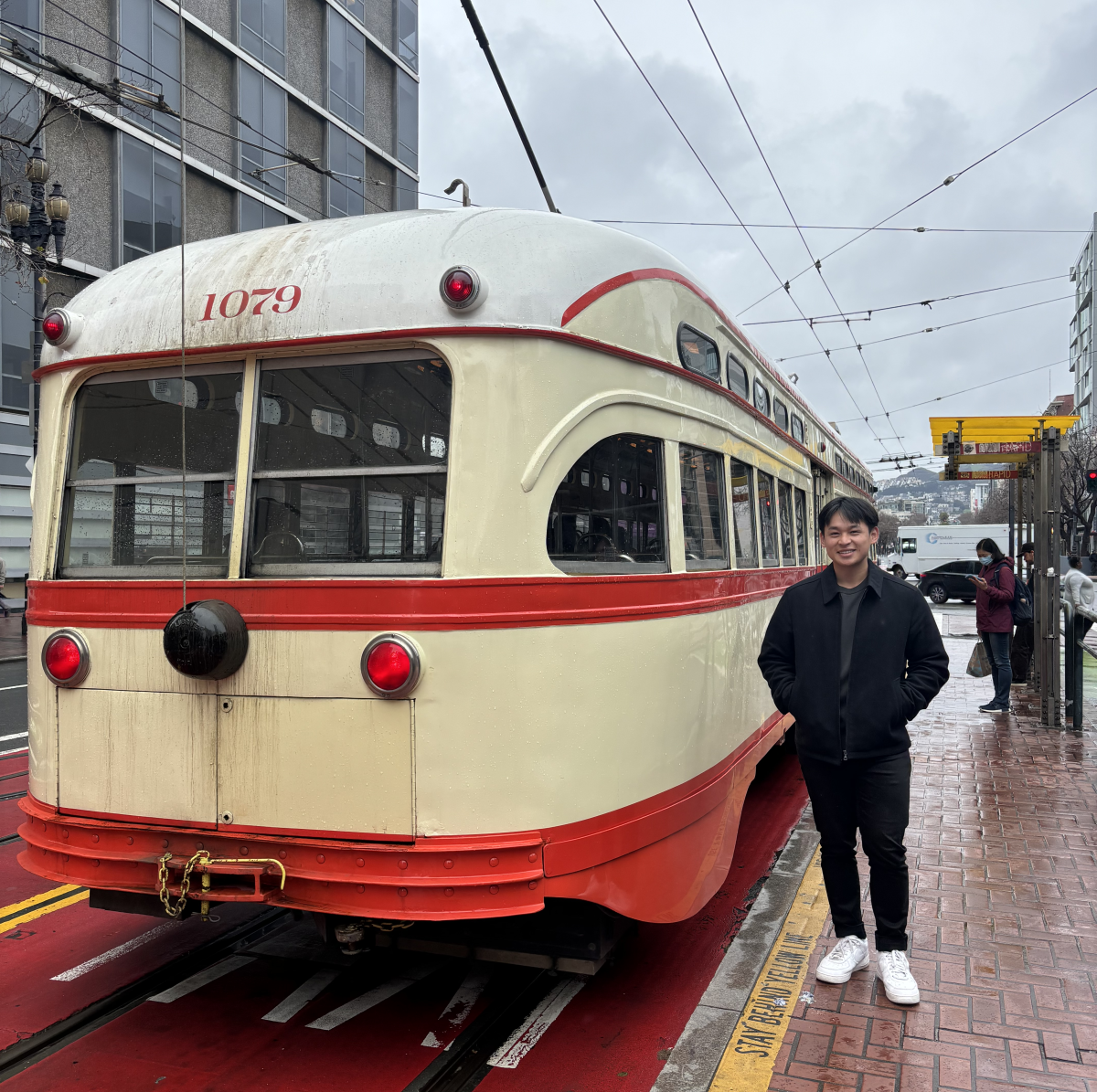
Meet William Z. (he/him), a SF resident and Environmental Outreach Associate at SF Environment!
Growing up in SF, William was exposed to sustainability at school, whether it be learning how to sort waste from San Francisco Environment’s mascot, Phoebe the Phoenix, or learning how our City’s water comes from Hetch Hetchy! From an early age, William grew a deep connection to environmental conservation starting from his experience with school field trips to different parts of the City, such as the Academy of Sciences, Ocean Beach, and Crissy Fields. These field trips taught William to appreciate green spaces and realize how climate change is endangering the natural environment. Additionally, growing up in SF’s Bayview exposed him to industrial waste sites and a lack of green spaces. This sparked his passion to take part in environmental justice work and bring green spaces into underserved communities, leading him to study environmental science in college. Now, he comes full circle by working on environmental outreach to SF residents at SF Environment!
William is exploring ways to be more sustainable in both his professional and personal life. In 2024, his Green New Year’s resolution is to reduce his carbon footprint by traveling more sustainably!
Here are two ways William hopes to travel sustainably in SF:
- Take public transit! San Francisco has a great public transportation system that connects different parts of the city with various bus routes! Taking public transportation allows William to explore the city and see things from a different perspective that he would not see behind the wheel. He gets more time to relax after a long day and catch up on reading his favorite books instead of driving in traffic and dealing with other motorists.
- Walk more! Walking is a great way to get exercise, connect with community, and save cost! William aims to walk 10 thousand steps a day with the help of public transportation. William’s favorite route to walk is around Bernal Heights or down JFK in Golden Gate Park.
Learn how you can travel sustainably in SF by visiting our website page.
Alejandra U.
Meet Alejandra Ureño (she/her), SF Environment’s Green Business Coordinator! At SF Environment, Alejandra is an advocate for small businesses and dips her toes in many areas of applied sustainability.
Alejandra’s spiritual connection to nature led her to do environmental work to protect the world around her. During the holidays, she implements sustainable shopping methods to express gratitude to loved ones with handwritten letters or a home-cooked meal. Here are some tips Alejandra uses to practice sustainability holiday shopping:
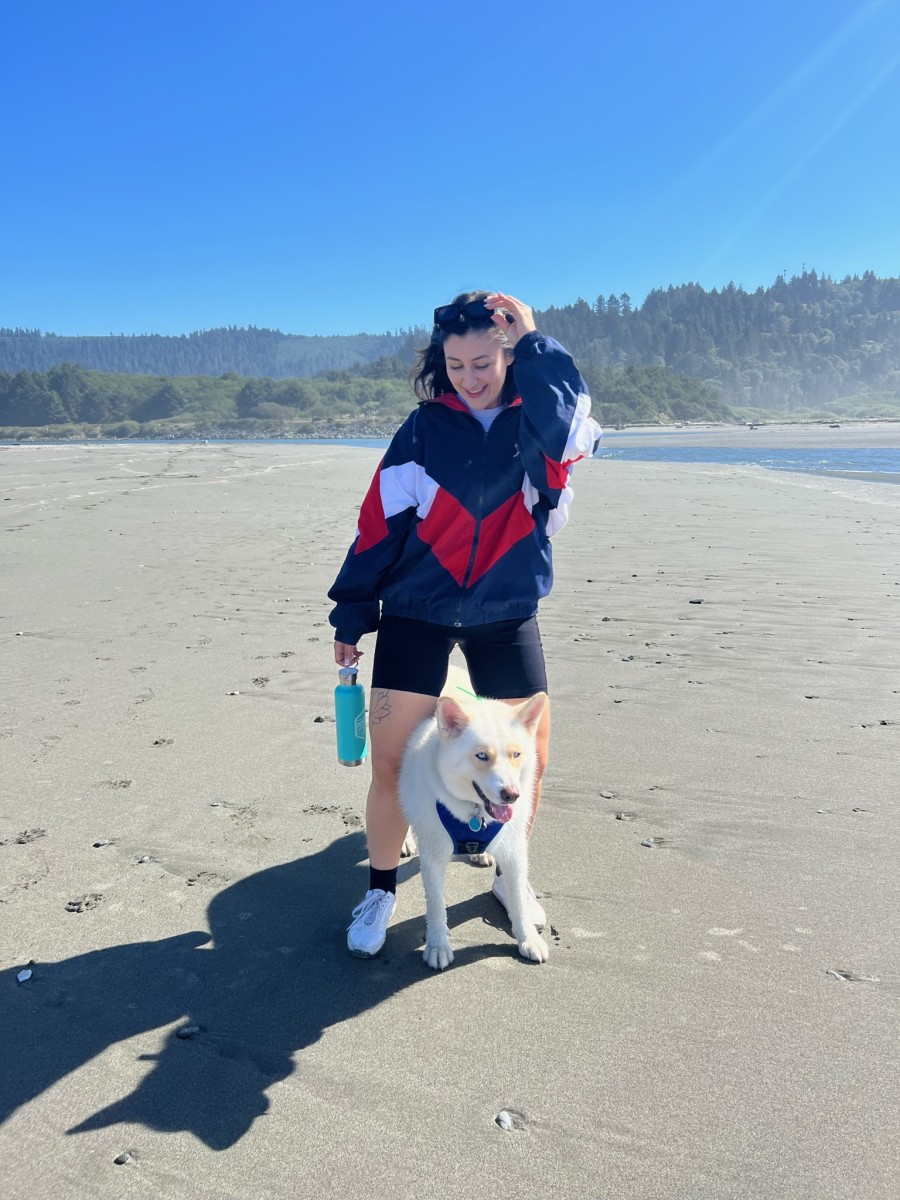
- Think practically! When looking for a gift, consider whether the recipient will use it or will end up being re-gifted, sit in a closet all year, or end up in the landfill. Something small and useful goes a long way, like a cookbook, an art or yoga class, or a framed photo. These are personal and thoughtful tokens that will be appreciated by the right person.
- The best gifts don't have to be expensive! Have you ever asked your mom what she wants for Christmas, and she answers with ‘a big hug from you’? Many of your closest loved ones simply want to spend time with you, share some laughs, and create memories! Consider what activities you can gift that are not material, and instead opt for a dinner together, a night out at a comedy show, or cooking a meal together.
- Support a San Francisco Green Business! Support small businesses in a local community, which oftentimes have gifts that are far more unique than anything that can be bought at a chain retailer. Shopping from Green Businesses supports business owners who have gone the extra mile to reduce their carbon footprint and green the local economy.
- Think zero waste! Whatever you will be gifting this holiday season, try avoiding unnecessary gift wrapping or packaging that will only end up in the landfill. Stop by a local reuse center, such as SCRAP SF, for some thrifted decorated wrapping paper or unique gift boxes or use a bag that can be reused in the future!
There are many ways to practice zero waste in our lives. To learn how you can green your holidays, visit our website page.
Kelly G.
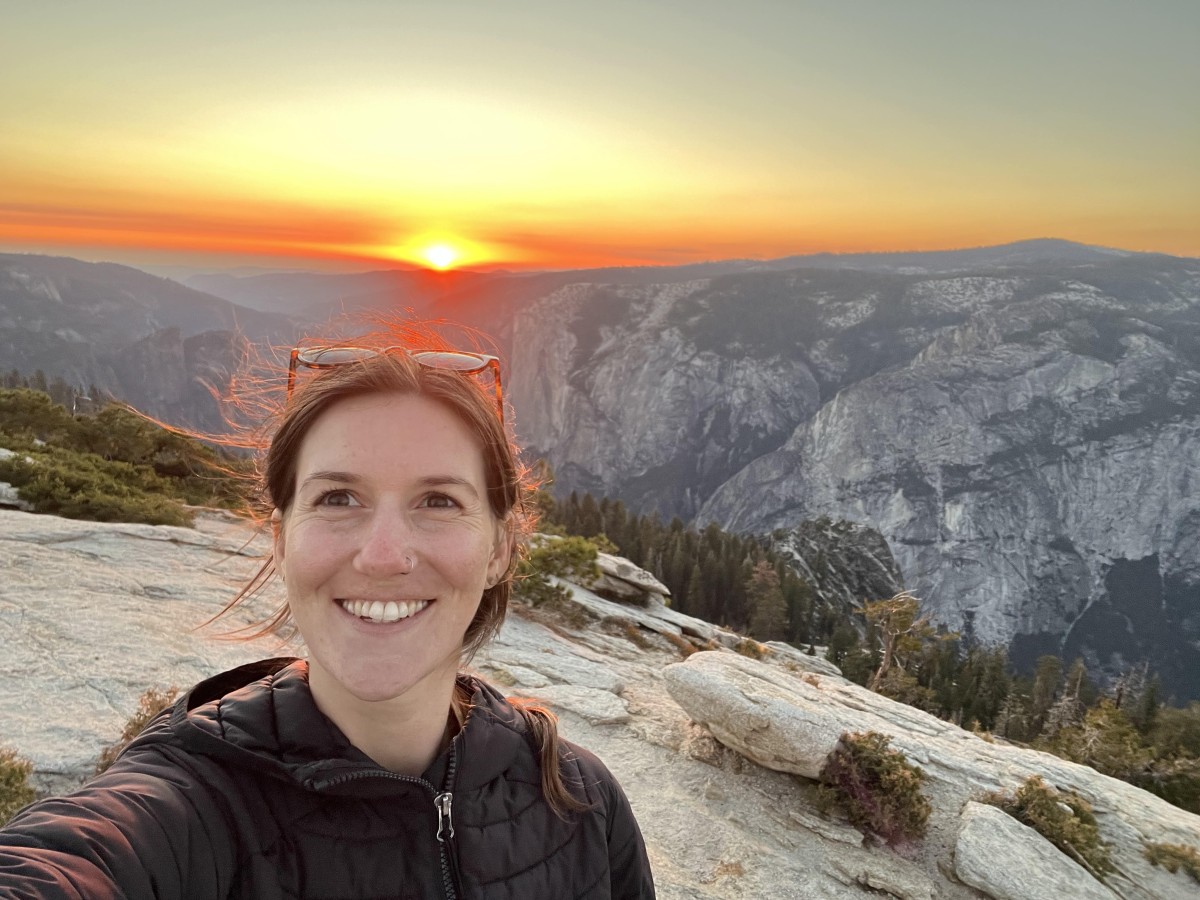
In San Francisco, one in four San Francisco residents is at high risk of food insecurity. When we dispose of edible food, we are wasting valuable resources that could otherwise be feeding our community members who do not know where their next meal is coming from. Being mindful about meal planning, purchasing, and consumption can help prevent food waste.
Meet Kelly G., the Commercial Zero Waste Coordinator at SF Environment! Kelly has been passionate about food recovery from a young age and ties it into her college and work experience. In high school, Kelly volunteered at the football "snack shack” where she learned about healthier food choices and proper food disposal through composting. At UC Davis, Kelly worked in a student-run kitchen where she learned how to make the most out of every meal served. Their kitchen explored creative ways to use leftover food and reduce food waste. Now, Kelly works on edible food recovery at SF Environment. Kelly works on implementing State Law SB 1383, which requires large food generators to donate their surplus food to local food recovery organizations that distribute it to feed the community.
Here are Kelly’s tips to reduce food waste, especially during the holiday season:
- Proactively prevent food waste by planning ahead! Aim for recipes where the ingredients in the dishes can be shared. Beforehand, get the proper headcount of attendees to accurately plan the serving size for portion control. Making a shopping list before you go to the grocery store will help ensure you only purchase the items you need.
- Use leftovers! Encourage people attending your holiday meal to bring Tupperware to take leftovers and share the food. Learn how to store your leftover food or ingredients properly to extend their longevity. Make new dishes from the scraps: For recipe ideas using leftover food, check out our website: RealFoodiesCompost.com.
- Donate! Extra raw ingredients or cans that you don’t use can be donated to local feeding organizations. Find a local feeding organization near you that accepts excess food.
- Compost! Leftover food should ALWAYS be composted in your green bin or backyard composting system, and never thrown into the landfill or recycling bin. By composting leftover food, the organic material will be made into nutrient-rich soil which when applied to the land, helps farmers grow resilient, nutritious new crops for our food system.
-
Tip: food-soiled paper, such as parchment paper or paper towels can also be composted!
-
To learn more about SB 1383, visit State Law SB 1383: Food Recovery Requirements.
Danielle G.
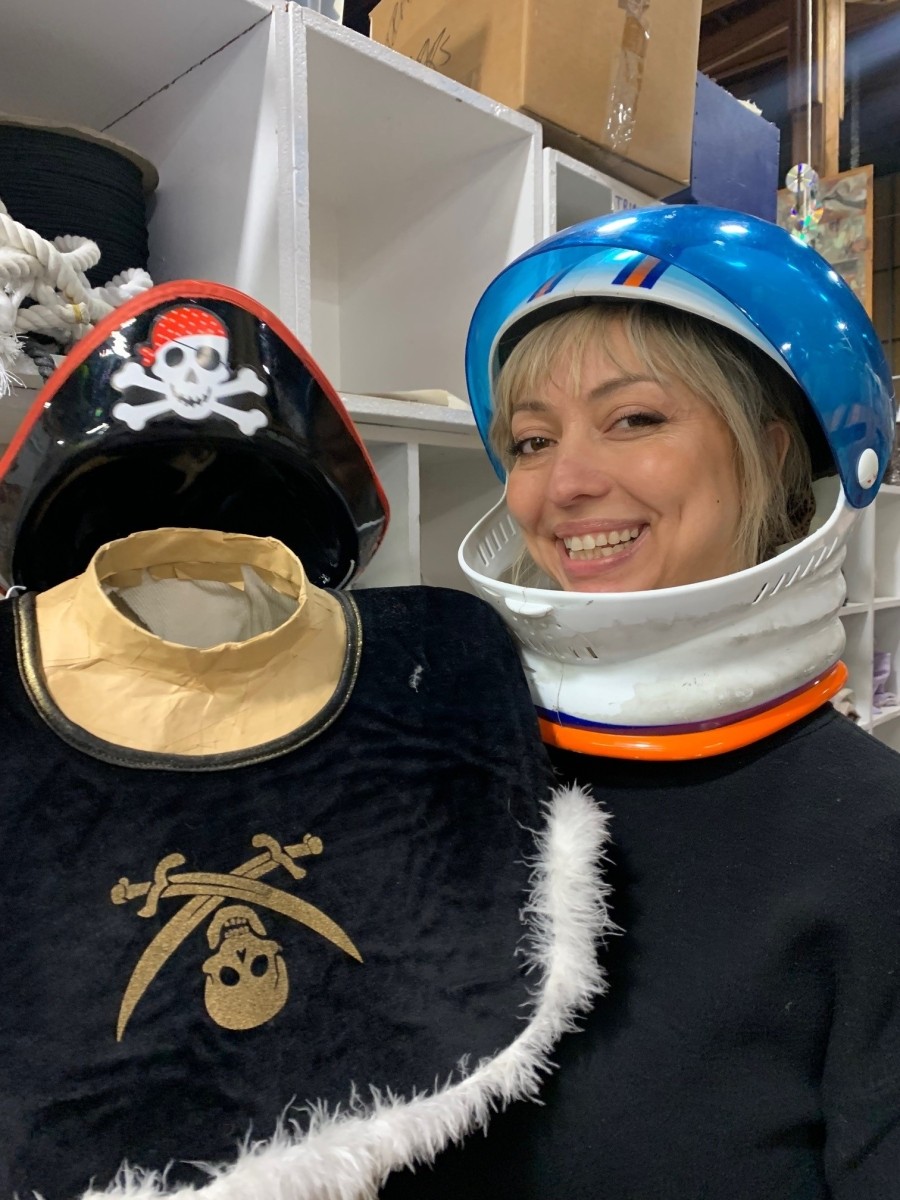
There are many fun ways to reduce waste during the holidays, such as sustainably sourcing your Halloween costume from what you or your community currently has!
Meet Danielle Grant (she/her), a proud SF resident, public school parent, and SCRAP SF’s programs director! Danielle’s Halloween costume is made from donated materials found at SCRAP SF, a non-profit creative reuse center that encourages repurposing donated, everyday objects into new projects that bolster environmental awareness. SCRAP SF redistributes materials back to the community and reduces waste by diverting over 200 tons of materials heading to landfills every year.
Everyone can participate in creative reuse! We all have a junk drawer where things may be languishing. Creative reuse starts with looking at what you are disposing of and thinking about the culture of repair. Ask yourself, “How do I keep the item I have in good shape, lasting longer, and out of the waste stream?”
Don’t be afraid of creativity! Here are some easy ways to sustainably source your Halloween costumes:
- Go shopping at the back of your closet before you buy anything, especially for a Halloween (or any holiday) moment. Upcycle clothing that is waiting for you at the back of your closet into a new Halloween costume. If your closet doesn’t have materials that you need, look in a friend’s or family member’s closet!
- Purchase donated materials at a Creative Reuse center, such as SCRAP SF! Participating in a creative reuse center, in whatever capacity you can, is very eye-opening to learn more about your relationship with waste and the environment.
- Check out your local thrift stores! The internet has the best ideas for easy do-it-yourself costumes that can be made from donated clothing found at a thrift store. Find your local reuse and recycling site in San Francisco here.
There are many ways to participate in the creative reuse culture and SCRAP SF. Support SCRAP SF as a consumer, material donor, or volunteer. To learn more, check out their website.
Gregory Hom
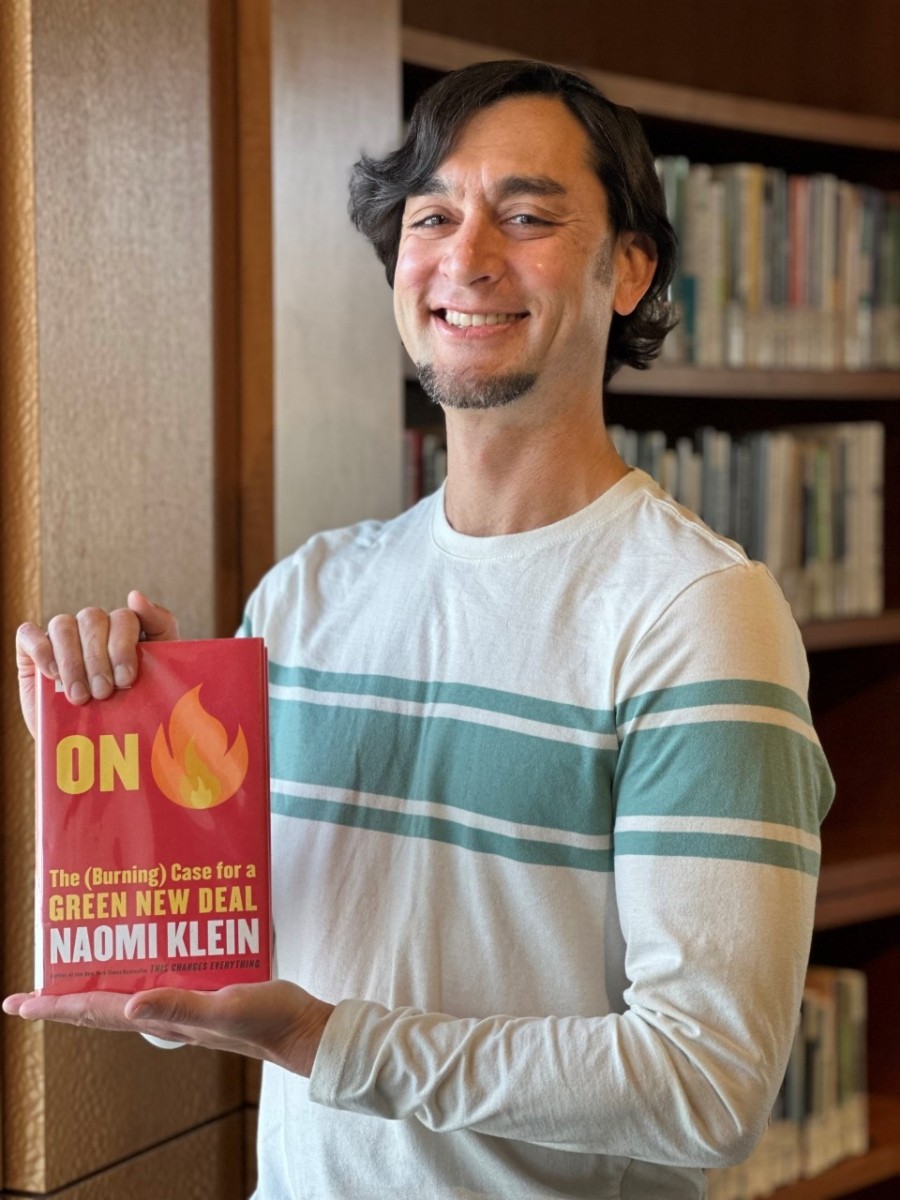
Photo provided by SFPL
“Climate change is on everyone’s minds. You can’t get away from it, no matter where you live in the world, because the entire planet is affected. As a SFPL librarian, I love that anyone can go into a library and educate themselves about the issues that matter to them. I access so much free information at our libraries - books, academic journals, magazines, or digital collections - to educate myself about climate change and environmentalism.”
Meet Gregory Hom (he/him), Program Manager at the San Francisco Public Library (SFPL) Environmental Center! He has been with SFPL for 15 years.
The SFPL Environmental Center is a place to explore environmentalism and learn about the natural environment. As the Program Manager at the SFPL Environmental Center, Gregory invites speakers to inspire participants to take climate action on both the collective and individual level. In the upcoming months, speakers such as community organizations Planet Drum Foundation and Golden Gate National Recreation Area will share their sustainability initiatives and ideas. Green Stacks, a SF Environment and SFPL partnership, provides resources for a sustainable lifestyle, such as booklists to explore pollinator gardens, sustainable food choices, and waste reduction.
Outside of exploring the library, Gregory loves to explore the natural world! He grew up learning about the Lost Coast when he was 16 and was able to explore it almost 30 years later. He recently backpacked 27 beautiful miles over 3 days!
Get involved with the Environmental Center by exploring their book lists or attending their programs at on.sfpl.org/EnvCtr. Feel free to contact Gregory with any new green ideas, partnerships, or suggestions for the Environmental Center at gregory.hom@sfpl.org.
Mei Ling H.
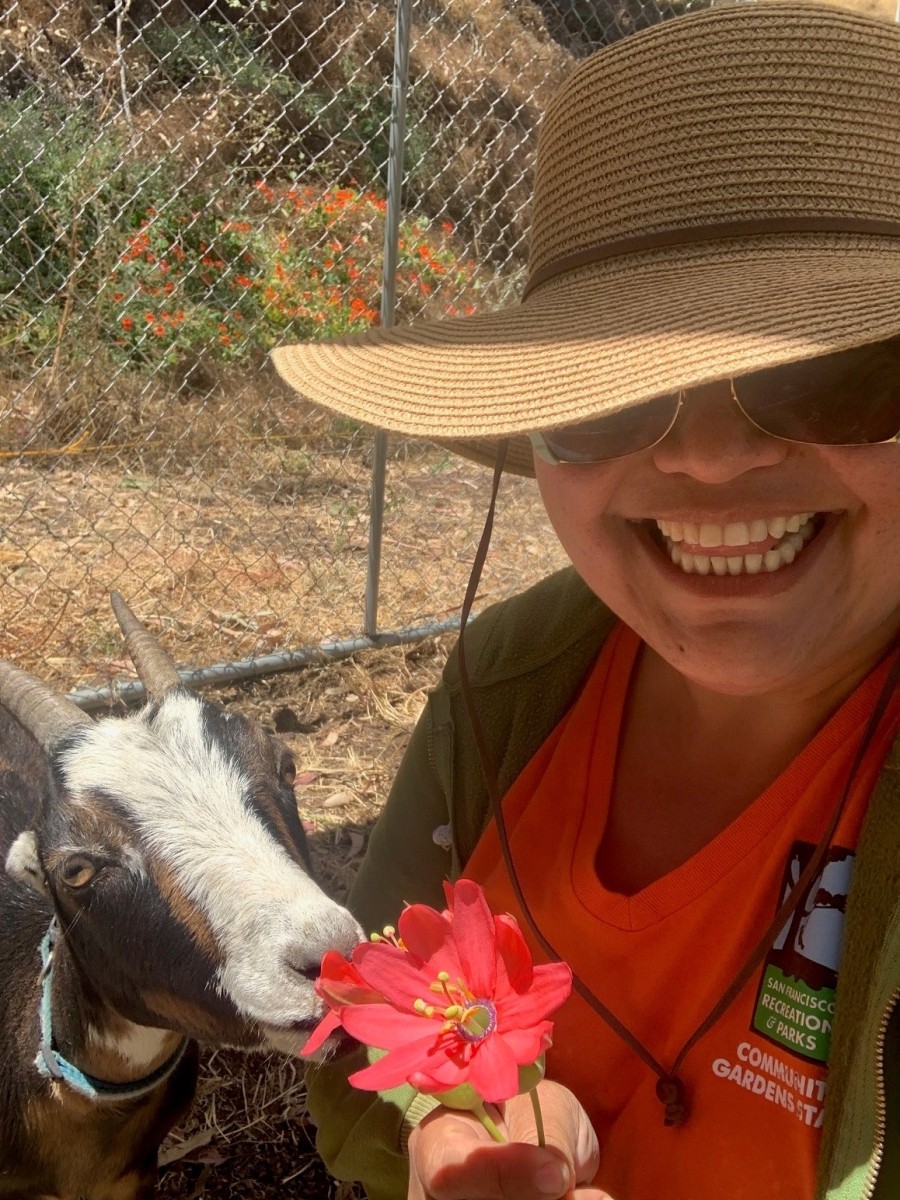
“I never really felt like I belonged anywhere until I had the opportunity to contribute to my community the way I can now,” says Mei Ling, who manages the San Francisco Recreation and Park Department’s Community Gardens Program. “I feel like I belong to the city as much as the city belongs to me.”
Walking around San Francisco, Mei Ling often spots a street tree she helped plant or a neighbor whose garden she helped bloom. It makes her feel she’s part of the ecosystem of the city.
She remembers the giant trees that grew in her neighborhood park as a child, walking past them to her elementary school and wondering what they were called. Years later, when she moved to San Francisco and began working in urban land management, she finally learned that those trees were sycamores and felt the same curiosity in connection to her environment.
In her role at Rec and Park, Mei Ling spends her days building connections between the people who live here and the landscapes they inhabit. Along with managing the Community Gardens program, Mei Ling and her team are focused on reducing barriers for anyone who wants to garden anywhere in the city. They provide support to over 20,000 people a year through their education and community resource programs, including Garden Resource Day in which Rec and Park provides free materials, like compost and vegetable seeds, as well as gardening advice to the public. She’s thankful for all the partnerships her team has been able to develop for this program, including major support from SF Environment for funding this year’s compost giveaways and the UC Master Gardener Program’s volunteer expertise. Garden Resource Day helps connect neighbors to each other as well as support food security and has proven so popular that Rec and Park is currently scoping a project to build the San Francisco Garden Resource Outreach and Workshop Center, or GROW Center. This facility will expand on Garden Resource Day programming, both in frequency and scope, allowing Mei Ling’s team to help more San Franciscans with their gardens.
Mei Ling shared, “At the Recreation and Park Department, we all love that we get to make spaces in the city that are for everyone, and we’d love your support as we work towards building out the SF GROW Center. The parks belong to all of us – this month and every month, we hope that you get out there and enjoy your parks!”
You can learn more about the SF GROW Center and Garden Resource Days on the Rec and Park Urban Agriculture webpage.
Read more stories
Freddy C.
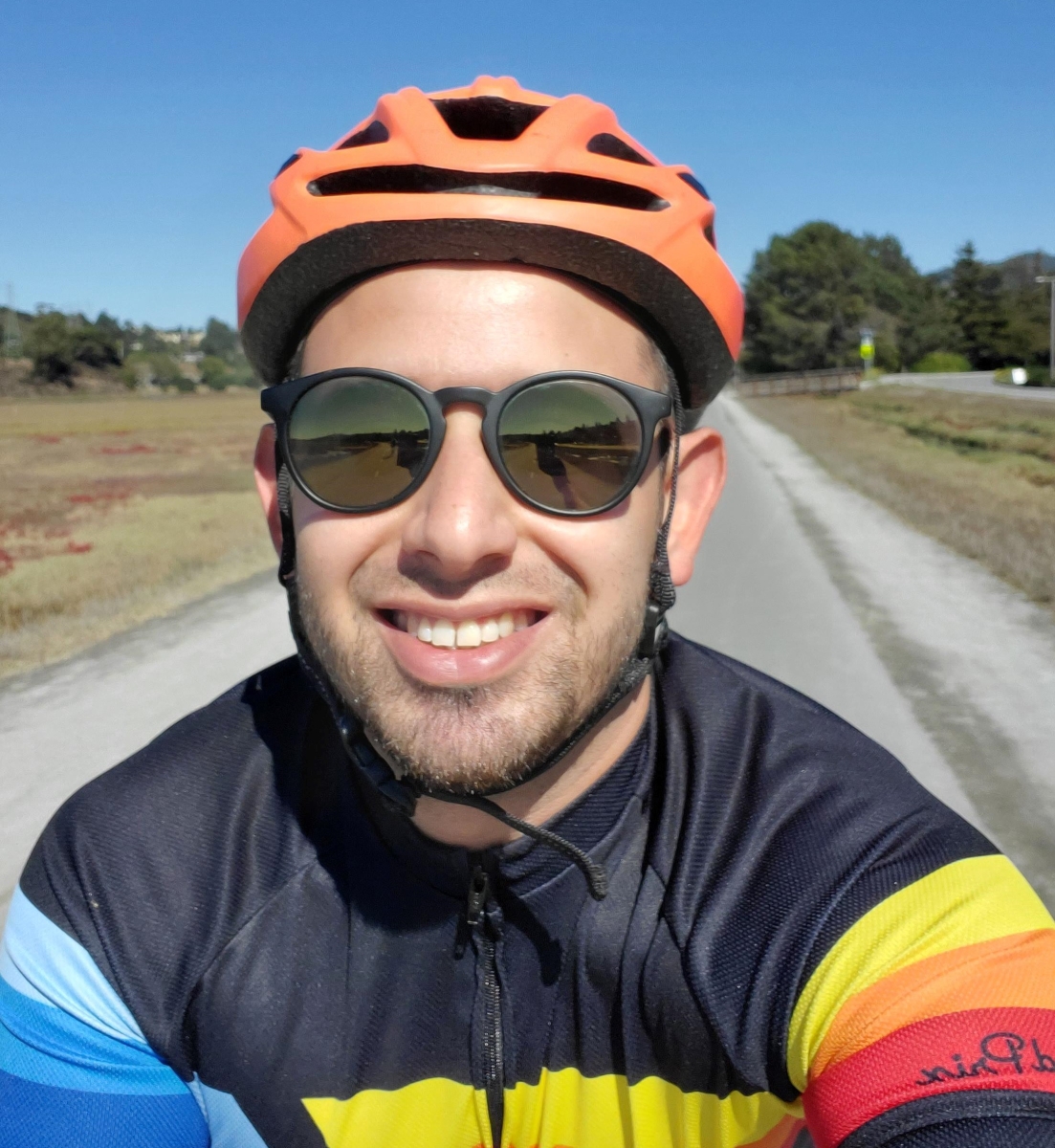
“PRIDE month is important to me because five decades ago, being gay was a crime, and San Francisco, along with NYC, was the birthplace of the gay liberation movement. One reason why I work at SF Environment (SFE) is because it's a very Queer-friendly environment. We’re allowed to express ourselves, be who we want to be, and have fun while doing work. I’m proud to be a gay man working at SFE; advancing climate protection. This month and beyond, support your LGBTQ districts, attend a party or a march, and have fun!”
Freddy (he/him) is SFE's Residential Zero Waste Specialist and implements our city’s zero waste policies and programs across the residential sector and special events. He also produces SFE’s fix-it clinic repair events at SFPL library branches, where he coordinates free clothing and bike repair.
Although he is passionate for zero waste and dumpster diving, one of his other passions is cycling. Freddy is an avid bike commuter and recently completed his first AIDS Lifecycle ride from San Francisco to Los Angeles fundraising for the SF AIDS Foundation and the LA LGBTQ Center!
Freddy’s favorite bike route in the city is the “ice cream cone” - biking down Twin Peaks to Market St, to The Embarcadero, around The Embarcadero to North Point St, and down Polk Street! It is about a 45min bike ride.
Anne Wong
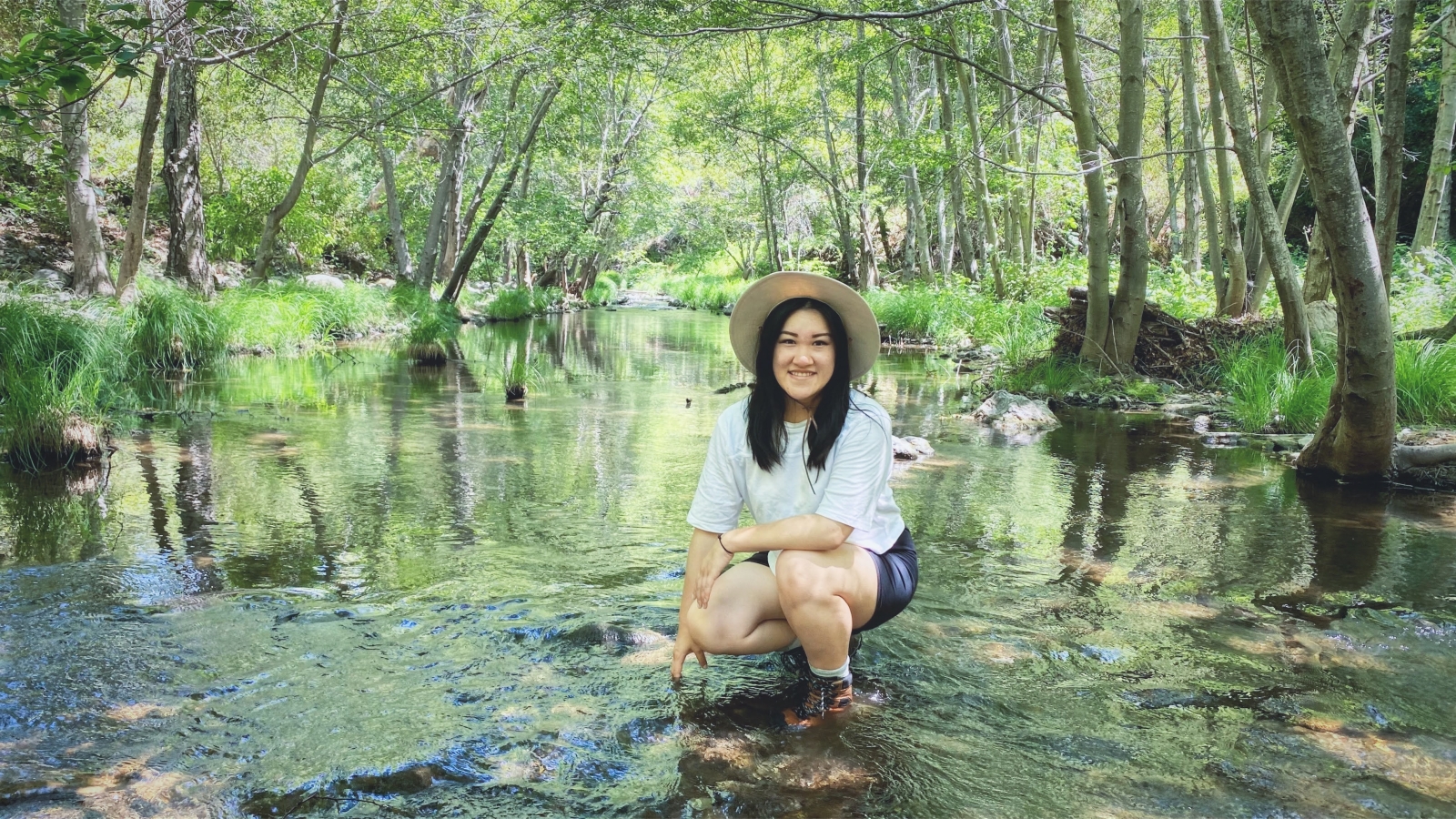
“My favorite place in San Francisco is Ina Coolbrith, a park by the school I went to growing up. It has a beautiful view of the SF skyline, Chinatown, and the Bay Bridge. I’ve been going there since I was a kid. This spot acts as an anchor in time. It reminds me of how our City has changed and stayed the same, and how I have changed and stayed the same.”
Meet Anne (she/her), a Chinese American born and raised in SF and SFE’s City Government Zero Waste Assistant Coordinator.
Chinatown raised Anne. Throughout her childhood, she spent time at the public libraries, afterschool and summer programs (swimming and ballet at the Chinatown YMCA), and stores that her friends’ parents owned. She went on field trips and learned about the history of Chinese immigration to San Francisco and what it meant to be Chinese American. Anne’s favorite things about Chinatown from her childhood was performing Chinese folk dance and hanging out at the Chinese Playground (Willie “Woo Woo” Playground).
In 2017, Anne coached a dragon boat team for Asian Pacific Islander youth in San Francisco, which was a pivotal moment to her environmental journey. There were many wildfires that year and the unhealthy air quality impacted the health of the youth she was coaching. Unfortunately, they couldn’t paddle due to the unhealthy air quality, which was their opportunity to create strong community connections and empower themselves with a new skill. Seeing the direct impacts of climate change on the lives of youth, Anne started her career at SF Environment to create systemic change for everyone to have healthier lives.
During the pandemic, residents had to isolate indoors, but many living places in Chinatown didn’t have proper ventilation. In affordable housing units, there is a need for more translated information for residents to understand the information or policies that directly affect them. An important part of Anne’s role is connecting to the Chinese community and advocating for in-language resources because it helps builds trust, opens communication, and makes environmentalism accessible to the Chinese community. SF’s Chinese community has been practicing sustainability through reusing and repurposing items, and Anne wants to help continue to build an active connection between environmentalism and Chinatown.
“AAPI Heritage Month is important because I’ve learned from my mentors that if you don’t know your history, you don’t know yourself. Representation matters so much. When you see someone like you in a role that you want, you realize you can also do it. Knowing my history and understanding my cultural roots has really shaped who I am and how I experience life. In the future, if I have a family, I want to pass on my culture and traditions,” says Anne.
Camille Seiberling
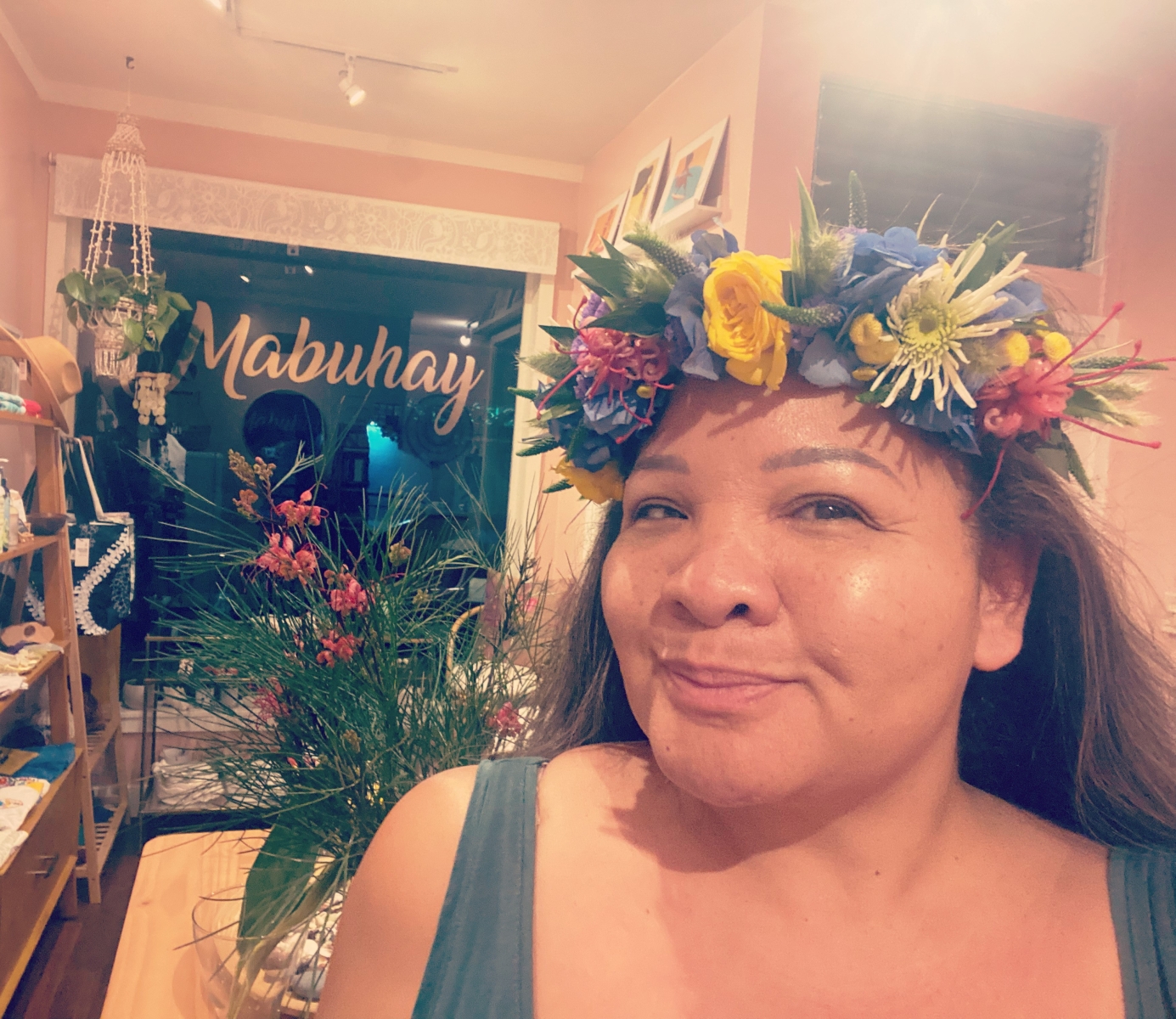
Meet Camille Seiberling (she/her)! She is a proud Black and Filipina business owner of Mabuhay, a local natural beauty store named in memory of her grandmother. “Mabuhay” is a Filipino greeting which means "long life”.
As a second-generation SF native, Camille was aware of the environmental impact on her family’s health and wellbeing. She witnessed her paternal relatives, who lived by the Bayview-Hunters Point Shipyard, suffer from the pollution and toxic waste left behind. Understanding the long-standing impact each choice can have on the broader population, she started her sustainability journey. As a concerned mother noticing the toxicity of many baby products, Camille started her business journey selling safer toys, clothing, and bottles for children. Now, she has transitioned to a natural, non-toxic beauty store to promote healthier living for customers and their families. Her beauty products are made by local women of color in order to reduce the carbon footprint of her store’s products. In 2022, Camille joined the San Francisco Green Business Program to get technical and financial support making sustainable switches for Mabuhay, one of which was an energy-efficient flower refrigerator to help launch her lei workshops at the store! The store has also switched to 100 percent LED lighting and certified Safer Choice cleaning products.
Mabuhay has strong cultural roots tied to Camille’s grandmother. Camille’s grandmother was a hardworking Filipina and strong pillar in the San Francisco Asian American Pacific Islander (AAPI) community, supporting AAPI families living in the building she managed. Embracing her grandmother’s Hawaiian roots and cultures, Camille centered her business around the value of preservation for the natural environment. Camille learned how to create floral and ti leaf leis and crowns (lei po'o) in Kauai. She uses sustainably farmed and local flowers to weave the leis and crowns she sells. Camille urges everyone to support small businesses to contribute to the environmental and economic prosperity of their community.
Kirstie Dutton
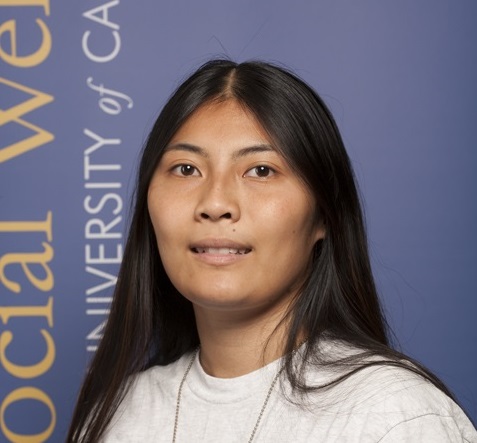
Meet Kirstie (she/her)! Kirstie is a Program Manager at Asian Pacific American Community Center (APACC), a San Francisco non-profit whose mission is to empower Asian Pacific American families living in Visitacion Valley by offering linguistically and culturally appropriate programs and services for low- to moderate- income immigrant families with limited or no English proficiency.
APACC was recently awarded the City and County of San Francisco 2023 Climate Action Plan and San Francisco Environment Department Zero Waste grants. These grants will support the Eco Waste Recycling program, which provides zero waste, recycling, and household hazardous waste education to residents living in Sunnydale Housing Development and Visitacion Valley. Because of the Eco Waste Recycling program that Kirstie manages, residents notice cleaner and healthier streets for their families and neighbors. During COVID-19, APACC also served as a citywide hub to support the community with tutoring services and internet access. Since then, APACC has continued supporting families throughout the City with academic and social services.
In 2016, Kirstie joined APACC to create programs to empower San Francisco youth. Kirstie’s passion for working with Filipino youth and providing culturally competent services stemmed from her experience in high school navigating mental health providers to help address depression and cultural and generational conflict. Through working at APACC, she feels culturally reconnected. Kirstie's experience at APACC emphasizes the resiliency and courage of the Asian Pacific American community as immigrant families navigate the climate that they are in, especially with Asian hate, and societal barriers. Kirstie shared, “Asian Pacific American Heritage Month is a reminder for our community to be united and work together towards equity. There is also beauty in recognizing our specific ethnic communities' stories - both successes and pains.”
To learn more about APACC, including how to volunteer or donate, visit the website apaccsf.org or email Kirstie at k.dutton@apaccsf.org.
Anya Deepak
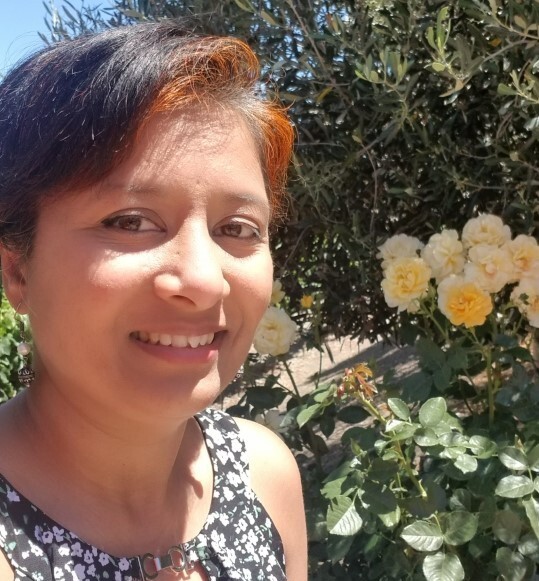
Meet Anya (she/her)! Anya has been with SF Environment (SFE) for 11 years and is SFE’s Senior Racial Equity Coordinator.
Throughout Anya’s life, she has always been passionate about building a relationship with the environment. Her uncle sparked her interest in the environment when he gifted her a subscription to the National Geographic magazine, which wasn’t widely available in India at the time. She was inspired by the beautiful images of people’s interactions with nature. Shortly after, she joined the World Wildlife Fund in Bombay at 8 years old! She volunteered and did school projects for beach clean-ups, bird watching, and community environmental work. Moving to San Francisco in 2010, she was amazed that the City was teeming with opportunities to be an environmentalist: every coffee shop has 3 bins and there was even a Green Festival! A pivotal moment that changed Anya’s life in San Francisco was when she went to the movies and saw a commercial about San Francisco’s goal of zero waste. From that moment on, she actively explored how she could contribute to the City’s environmental legacy.
Drawing from Anya’s work experience at SFE, she believes that women and the environment are inextricably linked and neither can thrive without the other. She explains, “I have seen first-hand that whether it is the mom cooking dinner on a wood burning stove in a smoke-filled kitchen in rural India, a promotora in Mexico City working in heavily contaminated neighborhoods near landfills, or a nail salon technician in San Francisco breathing in the fumes from industrial chemicals - women are at the frontline of environmental degradation in their homes, communities, and work. Women are first defenders. Empowering girls and women will pave the way for a more resilient community and a more sustainable future for all.”
When asked what motivates her environmental passion, Anya shared that it is being a mom. She wants all children to have the opportunity to grow up in a healthy environment and have an opportunity to connect with the land. Anya urges us to take collective action now so that the next generation can have a relationship with their environment’s soil, nature, and biodiversity. Anya instills these values in her community through her community eco-garden, where she teaches how to grow and harvest plants. Anya says, “Being from another country, it is important I have that connection with the community and nature to feel rooted in San Francisco.”
Maggie Marks
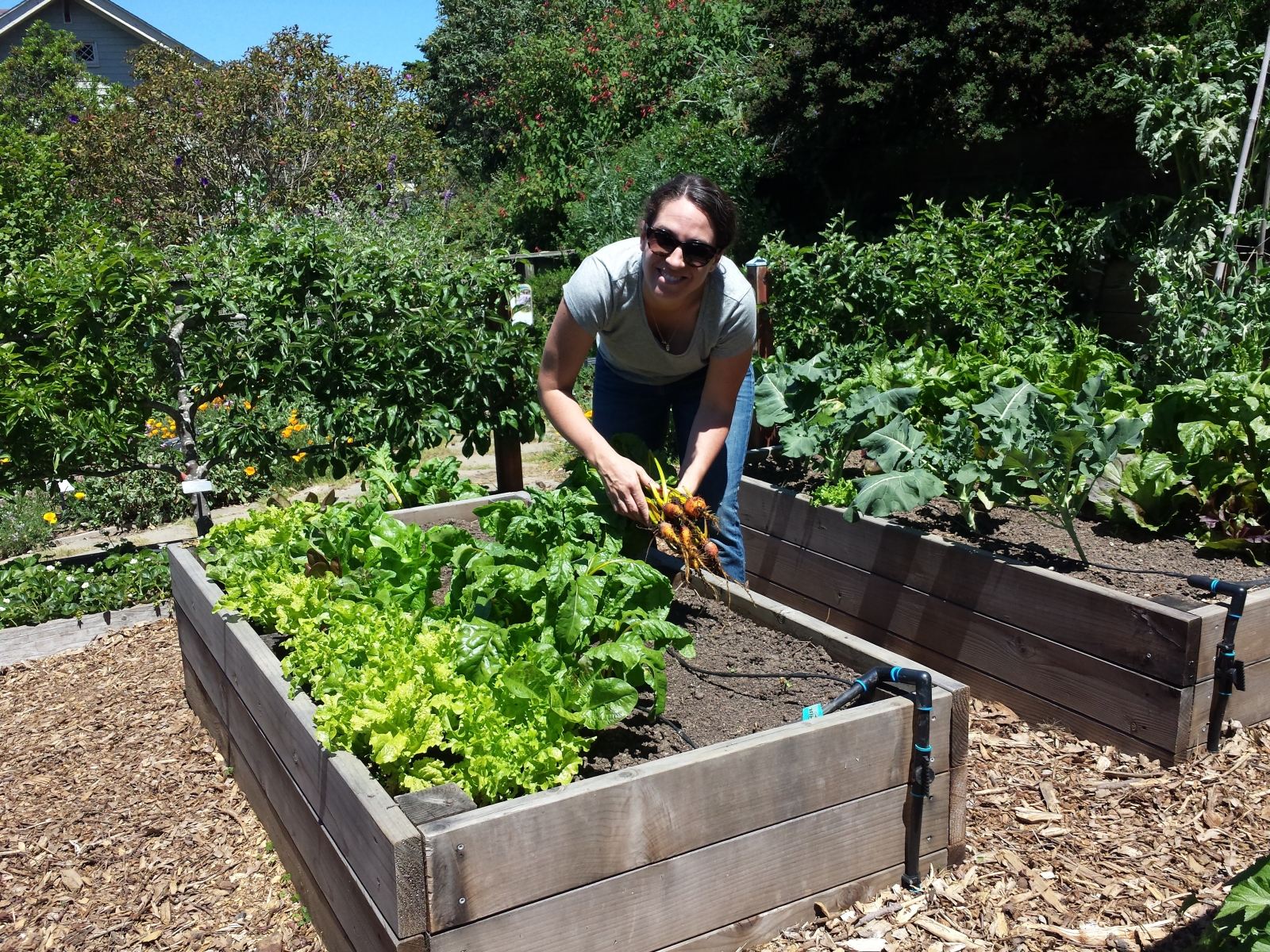
Meet Maggie (she/her)! Maggie is a fourth-generation SF native and has been the Director for Garden for the Environment (GFE) for the past 6.5 years (fun fact - Maggie was born and raised near GFE’s teaching garden in the Inner-Sunset)! GFE is San Francisco’s dedicated site for gardening and composting education; they are recipients of the 2023 Climate Action Plan and Zero Waste grants.
Influenced by her grandmother and mother, who were avid gardeners, Maggie always felt connected to the environment. She views herself as one small part in a larger ecosystem contributing to creating a more symbiotic relationship between the urban landscape and the natural world. She feels that our cities can become more supportive of living creatures in many ways, including building and maintaining sidewalk gardens, rooftop gardens, and rain gardens.
In 2012, Maggie took GFE’s “Get Up!” program and loved it! The class left her feeling invigorated and connected to the community. Now, in a post-COVID and tech-centric area, San Franciscans can find a supportive community through GFE. GFE’s space allows for participants to get their hands dirty, get outside, and try new, low-stakes activities, such as cutting branches or building walls. GFE helps community members nurture and exchange new skills.
Garden for the Environment welcomes anyone who wants to get involved! They are open dawn until dusk every day of the year and has a diverse array of gardening events. Maggie’s favorite class is the Pruning class, which teaches the art of trimming plants in order to keep them healthy and productive. For beginners in gardening, Maggie recommends participating in the “Growing a Garden: Where to Start” workshop to learn how to transform your space into a beautiful garden. This workshop focuses on working with nature, observing your space, and demystifying San Francisco's unique microclimate. To view available workshops or sign up to volunteer, check out the “Garden for the Environment” Eventbrite page.
Maggie’s advice for anyone who wants to start getting involved with climate action is to participate in the 3-stream recycling system. Properly sorting your bins is an easy first step to contributing to a positive change in the environment. The majority of what we produce in the kitchen and home can be composted, like food scraps, food containers, and yard trimmings. Properly disposing of compost from the black landfill bin to the green compost bin will decrease methane gas emissions and produce compost, which is essential to healthy soil and an important part of the fight against climate change.
T. Jones
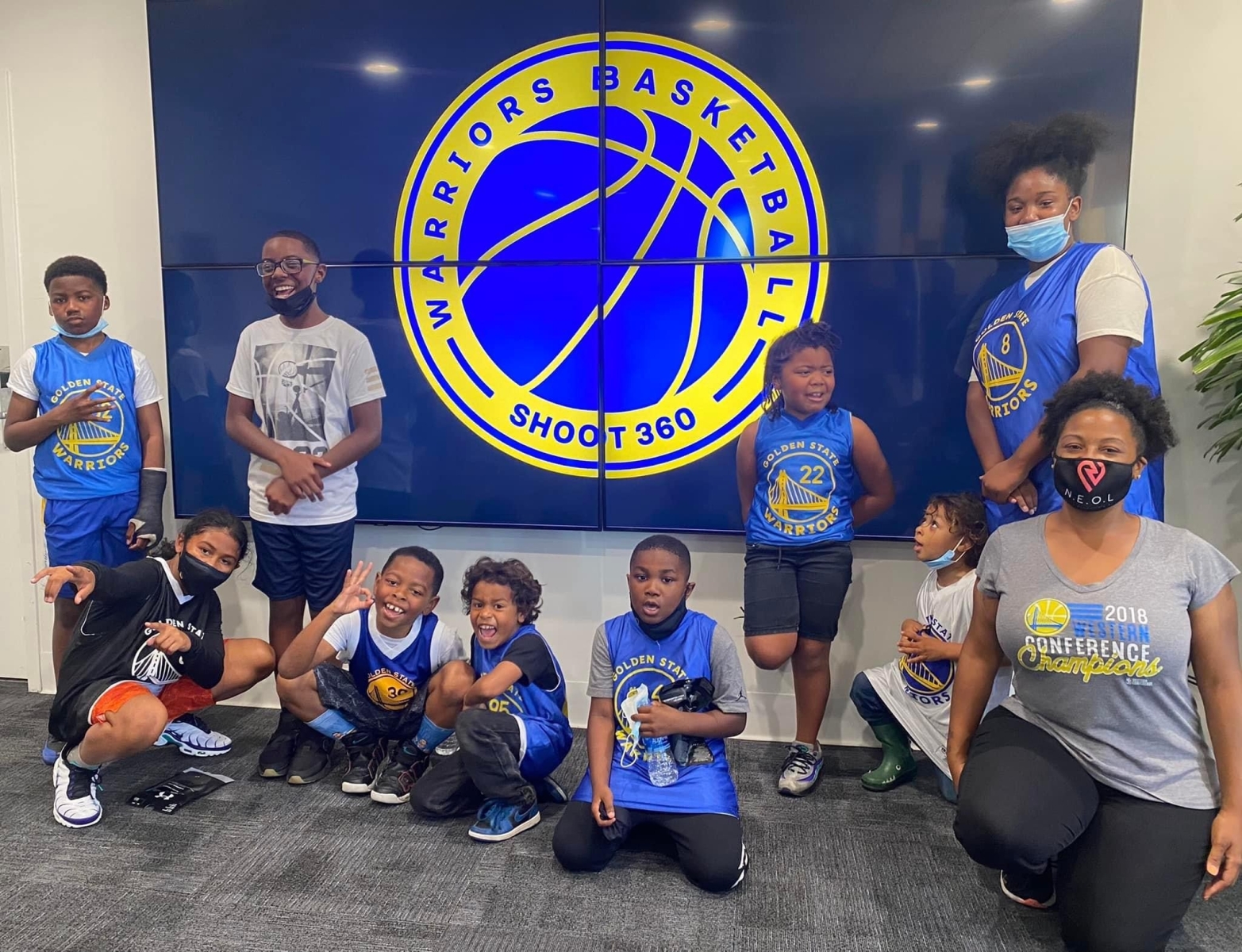
Meet T. Jones (she/her)! She is a community leader, Green Business Innovator, and woman pioneer in the automotive industry. T. Jones serves her community at her non-profit, Necessary Essentials of Life (NEOL), and her emergency roadside assistance company, DRVA. NEOL provides resources to help Bay Area communities navigate through life, including nutritional education, financial literacy, career readiness, mental health, and youth mentorship programs. DRVA helps stranded motorists with lockouts, jump starts, tire repairs, and fuel delivery. In December 2022, both NEOL and DRVA were recognized as a San Francisco Innovator Green Business, by the San Francisco Green Business Program (SFGB). SFGB works with San Francisco businesses, non-profits, and institutions to help them meet high environmental standards.
When T. Jones heard about the Green Business program through her sister, it stuck out to her as an opportunity to make a positive impact. Growing up in Black and Brown communities, she did not have access to green lifestyle resources. Since joining the Green Business Program, NEOL holds community workshops on healthier products and more sustainable lifestyle changes such as conserving water and electricity and turning off the lights. These are just a few simple examples that participants have noted go a long way to saving money and lifting financial barriers. T. Jones shared, “I am grateful to have met Jax on the SF Green Business team because my journey in the Green Business Program showed me that one person has the power to mobilize their community and create a change in the environment.”
T. Jones’ tip for the community: Change starts with you. Organize a community clean-up; It is a great first step to going green! Community clean-ups can lead to more recycling and composting efforts since it demonstrates what the bins are and where things go.
Anna Dagum
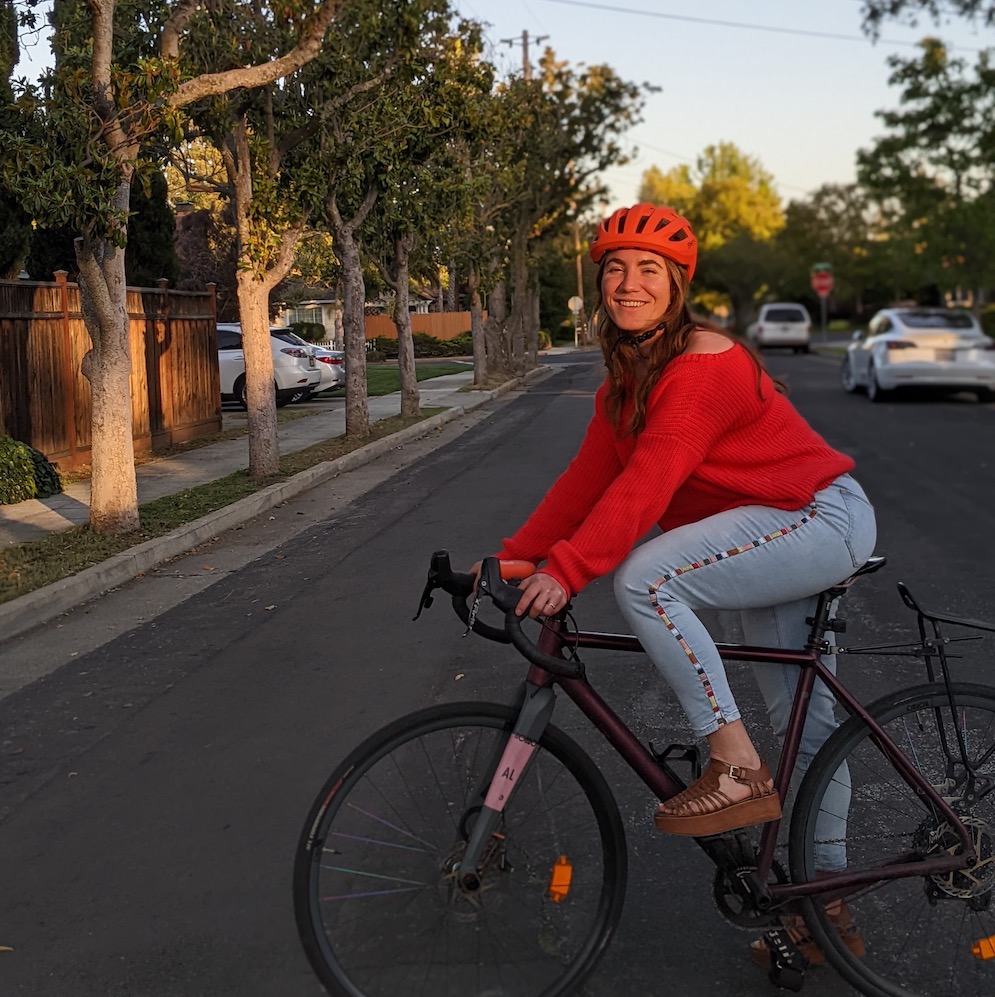
Meet Anna (she/they)! Anna gets around in San Francisco exclusively by bike and is never deterred by the distance, weather, or hills. They learned how to ride a bike in middle school and in high school they started riding their bike to school on their own. Anna shared, “I lived in an area where there wasn’t a robust transit system, and biking was free and gave me a sense of freedom to choose where to go. I could bike to and from school or go to the mall to meet friends and not have to depend on my parents.”
After high school, Anna moved to Vancouver for college and, although it rained almost daily, they continued to ride through the wet weather to get around. Now, Anna lives and works in San Francisco where wet weather isn’t as much of a factor, but hills are. However, the hills don’t discourage them from biking in the city. Anna’s favorite bike route is riding down Golden Gate Park, especially now that John F. Kennedy Drive is car-free, going up Lands End, passing the Legion of Honor Museum, riding down into the Sea Cliff neighborhood, through the Presidio Park, and across the Golden Gate Bridge.
During the week, Anna bikes downtown to work at the San Francisco Department of the Environment (SFE) where they work as the Transportation Associate. Anna manages the Commuter Benefits program for City and County of San Francisco employees and supports City-wide Transportation Demand Projects like the Emergency Ride Home program– a program that reimburses your taxi ride home in case of an emergency if you commute to work bus, bike, or foot.
For Anna, biking is great for her mental health, a way to spend time outside, and a way to help mitigate fossil fuels.
Anna’s tip for those new to urban biking:
Make yourself as visible as possible by wearing lights, helmets, and bright colors.
Matt Colley
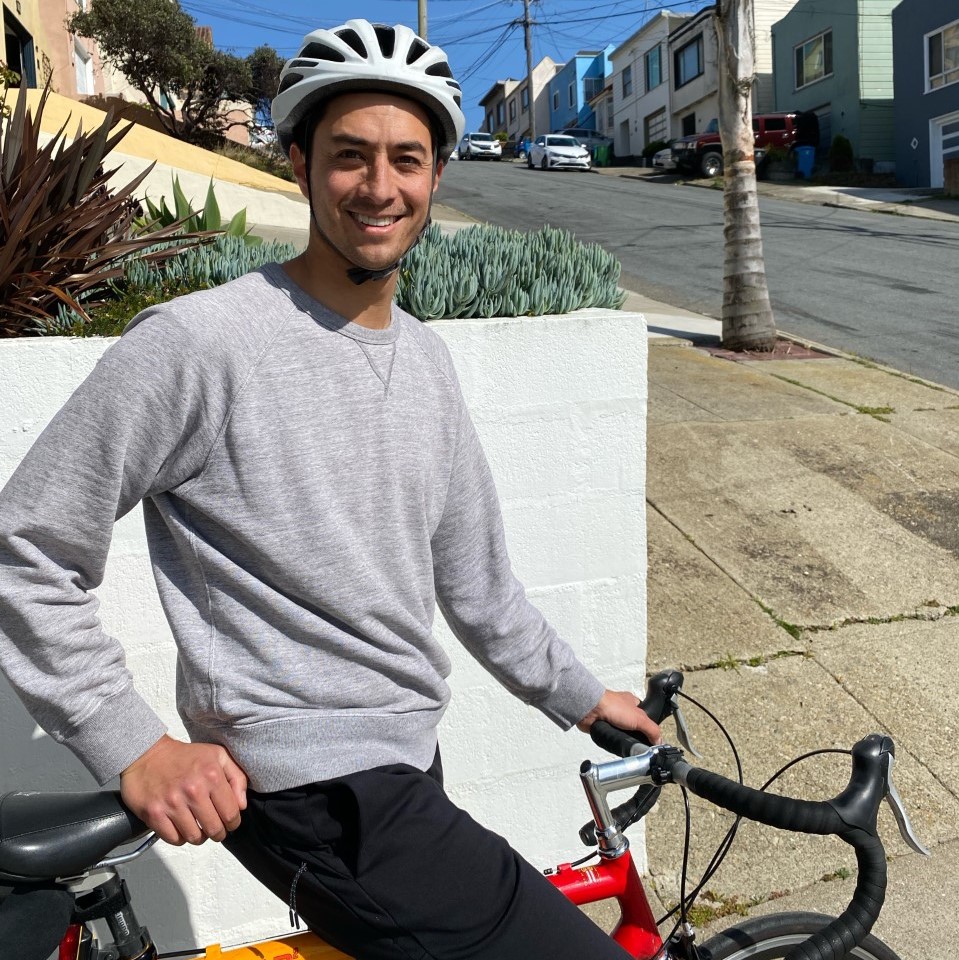
Meet Matt Colley (he/him/his)! Matt is an English & Career Technical Education Teacher in the Public Service Pathway at John O'Connell High School and a former extern of SF Environment. In the summer of 2020, Matt worked closely with the SF Environment Environmental Education team to learn about environmental outreach strategies and was hands-on with the development of the team’s Zero Waste curriculum.
Fast forward to school year 2021-2022, Matt is one of the teachers spearheading the Zero Waste Career Pathway Pilot program at John O'Connell High School. John O'Connell High School has a unique structure where students can pursue their career interest by opting into one of five career pathways: Building and Construction Trades, Design and Sustainable Technology Pathway, Entrepreneurship and Culinary, Health and Behavioral Science, and Public Service. For the first time, Zero Waste curriculum was integrated into three of the five career pathways. In the Public Service Pathway, Matt partnered with SF Environment’s Environmental Education team to train high school students on how to give interactive Zero Waste presentations to peers in a culturally relevant and fun way.
When asked what impact the new Zero Waste Pilot program has had on his school community, Matt shared, “Although we’re are still in the early stages to quantify impact, I am already hearing positive responses from students like, ‘Woah! You guys made recycling fun!’” Students in Matt’s Public Service Pathway have been building engagement and interest in sorting across campus with fun games like Trash-ketball.
A fun fact about Matt:
Matt’s preferred mode of transportation is biking! He has lived in Honolulu, Berkeley, and now San Francisco, where he always used his bike to get around.
Dontaye Ball
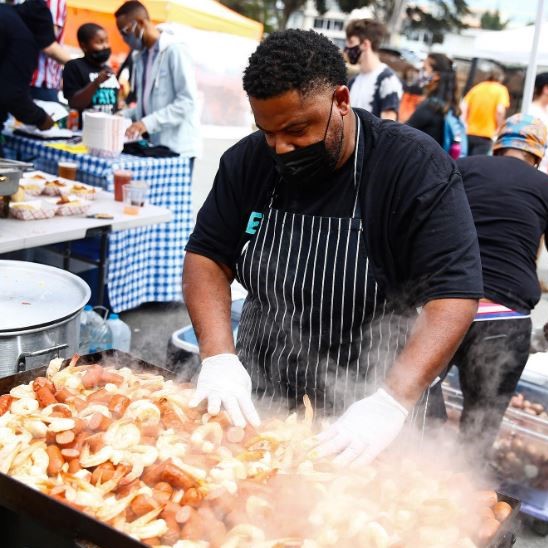
Meet Dontaye Ball (he/him)! Dontaye is a community leader, chef, and entrepreneur. When Dontaye isn’t serving his community as the Vice President of Bayview Merchants Association, a non-profit that acts as the voice for local businesses in Bayview-Hunter’s Point neighborhood in local government, he is dishing out delicious gumbo at local San Francisco farmer markets. After years of working as a chef in hospitality, Dontaye ventured out to run his own mobile food business in 2019. In October 2021, Gumbo Social became a recognized San Francisco Green Business.
Inspired by En2action, a community organization that connects economic resources to businesses, Dontaye attended the San Francisco Green Business program webinar to learn more about the growing green business community. He learned implementing green practices at Gumbo Social could lead to cost savings while conserving valuable resources. After further research on the program, Dontaye realized he was already on the path to becoming a recognized business–this goal was attainable and would positively impact his staff, community, and the environment.
Dontaye has always been aware of the human impact on the environment and believes small changes can make a big difference. He has been recycling and composting since he was young, drives a hybrid vehicle to get around, avoids polystyrene foam whenever possible, and sees committing to the San Francisco Green Business program as another way to make a positive impact on the environment.
Adrianna Zhang
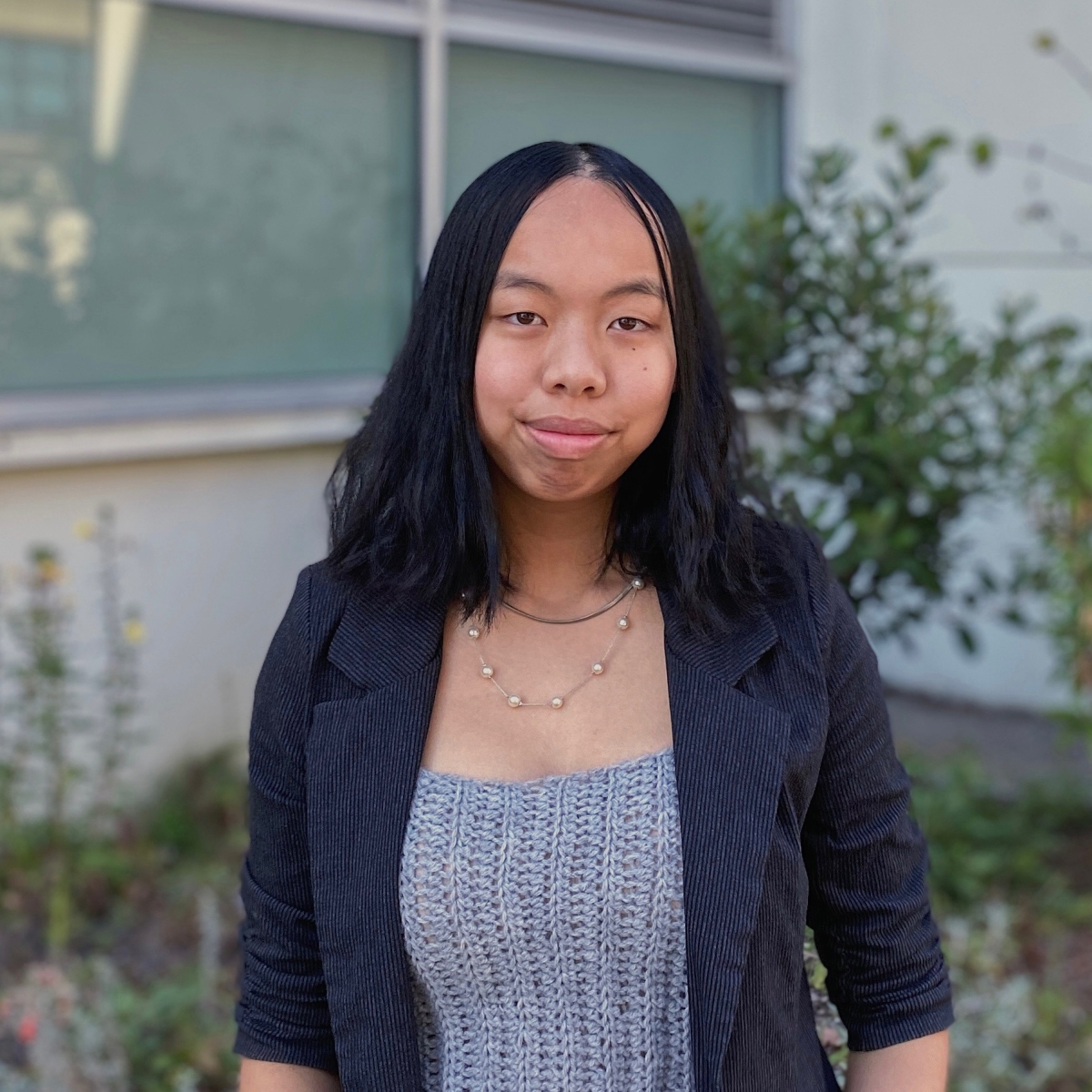
Meet Adrianna Zhang (she/her)! Adrianna is a senior at San Francisco’s Lowell High School who believes youth civic engagement is critical in creating a more just and sustainable world. Therefore, she is helping to bridge the gap between youth and government. Although youth under the age of 18 are not eligible to vote in the US, there are many ways youth can build alliances with government leaders and lawmakers. She currently serves as the Chair of the San Francisco Youth Commission, an organization that helps bring youth voices to the forefront in the policymaking process. The San Francisco Youth Commission advocates to advance policies that benefit San Franciscan youth, like the expansion of the Free Muni for Youth Program in August of 2021. The new policy provides free Muni to all youth, reducing financial barriers to transport to and from school, and helps foster a new generation of Muni riders.
Joining the Youth Commission is only one of the many ways for youth to get involved. Adrianna shares three ways to get youth more involved in civic engagement:
- Model civic involvement
- Encourage age-relevant policy discussions and curriculum
- Treat youth as genuine partners
(Re)watch Adrianna’s inspiring TEDxTalk from San Francisco’s Climate Action Plan launch event to learn more about youth involved in civic engagement.
Jorge Medina Dzib
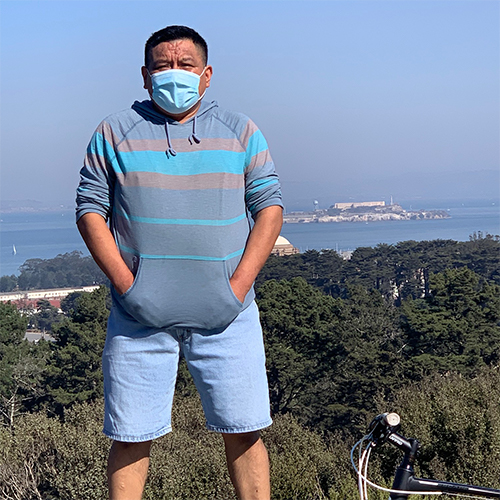
Meet Jorge Medina Dzib (he/him/his)! In his more than 20 years as a San Francisco resident, Jorge has intentionally never owned a car. Whether it's spending time with friends, going grocery shopping, commuting to work across town, or exploring San Francisco, he always chooses low-carbon modes of transportation like riding the bus, biking, or walking. Jorge knows the city so well, he hasn’t needed to check a map or phone app to know which bus line to take to get to his destination! Jorge is proud that he doesn’t own a vehicle since it has contributed to a healthier lifestyle, and helps the environment.
Christy Vong
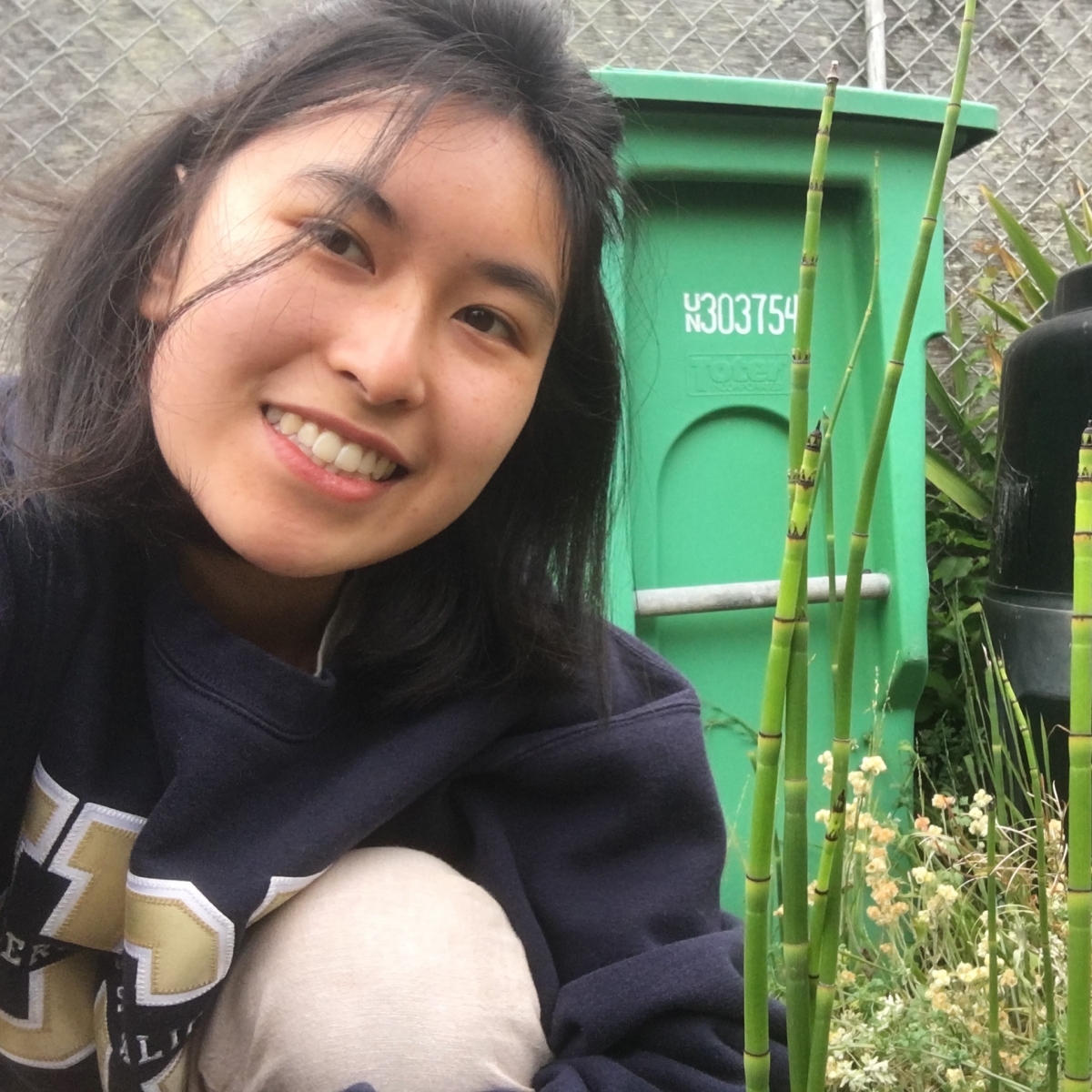
Meet Christy Vong! Christy (she/her/hers) graduated from Lowell High School (Lowell) in June of 2021. Christy was raised in SF’s Richmond District and not only has fond childhood memories riding the bus with her mother, but as a teenager, she now regularly takes the bus to school or to hangout with friends. Christy always loved the sense of freedom taking the bus provided so she could go anywhere, but it wasn’t until high school when she became conscious about how transportation affects the environment.
Christy didn’t identify as an environmentalist until she attended the 2019 Zero Waste Youth Convergence, a full day event planned by youth for youth to learn, collaborate, and network with other zero waste youth champions. Inspired by food waste and fast fashion workshops, she joined Lowell’s Eco Club where students explore ways to make Lowell more environmentally friendly. Amidst the pandemic in 2021, Christy and her Eco Club were determined to uphold the yearly Lowell Eco Swap–an event where students exchange clothing to help destigmatize second-hand clothing use, and find clothes a new home. Christy and her fellow club members created a hybrid virtual and in-person strategy to divert clothing from going to the landfill. Whereas in past years, the event took place on campus and was promoted with flyers, this year Eco Swap members took to social media to spread the word far and wide. The members organized swap locations in different neighborhoods around the city making it convenient for students to participate. Christy and her team collected over 1,000 wardrobe pieces during the month-long Eco Swap event, five times more than past years, and 20 percent of those items were rehomed with fellow students. The remaining pieces were sent to thredUP, an online thrift store.
Through this experience, Christy realized how common and wasteful fast fashion is with high schoolers Now, Christy is more conscious about her wardrobe purchases and how her decisions directly impact the environment.
Christy’s Favorite San Francisco Spot:
Clement Street Farmers Market. During the pandemic, Christy started visiting the Clement Street farmers market every Sunday. Those weekly visit inspired her and she now works with one of the farmers market vendors, Delightful Foods Bakery.
Pauli Ojea
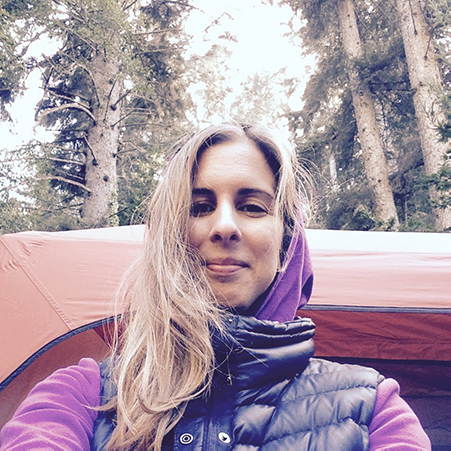
Meet Pauli! Pauli (she/her/hers) has been with the San Francisco Department of Environment (SFE) for 13 years and is currently on the Toxics Reduction Team. In 2015, Pauli participated in a study where she was biomonitored for certain chemicals like flame retardants and polyfluoroalkyl substances (PFAS). PFAS are a class of chemicals that have non-stick and stain resistant qualities, often found in electronics, carpet padding, baby products, takeout containers, and non-stick cookware, amongst others.
The goal of the study was to better understand how and to what extent chemicals transfer from the environment and objects into human bodies. The study findings shed light on how certain occupations could put people at greater risk of these chemical exposures. For example, fire fighters showed to have higher levels of flame retardant and some PFAS chemical levels than office workers, like Pauli. And, everyone tested in the study had PFAS detected in their bodies revealing that these chemicals are hard to avoid no matter where someone works! Studies like these contribute to making informed policy decisions, and Pauli and the rest of the Toxics Reduction Team rely on data to inform their work at SFE.
Pauli applies her chemical knowledge to benefit her personal life. She runs through a check list of questions before purchasing any item to prevent chemicals from affecting her and her family’s health or the environment. Questions include, “Do I need this? Can I buy it second-hand? Is the manufacturer mindful about the kinds of chemicals used to create their products? Is there excess product packaging? Is the product sourced from a local business or entrepreneur?” Pauli frequently references the SF Green Business Program so that she can support local businesses that meet high environmental standards.
When asked what motivates her work in the environmental field, Pauli shared that her parents inspired her. Her father, who was born on the island of Cuba sparked her love of nature, especially the ocean. Pauli has fond memories of her father taking her to the beach in Southern Florida to swim and see all the fish in the crystal-clear water. Pauli’s mother, who was born in Madrid, Spain gave Pauli a deep appreciation for cities and the sense of community they bring. Her parents taught her to be grateful for everything nature gives us, often taking a moment to recognize the joys of nature, “Look at that bird; it’s amazing!” She was also taught never to waste anything. Her family strived for zero waste in the kitchen avoiding throwing away food yogurt containers until they broke. Looking back at her childhood, it’s no surprise to Pauli that she wound up in the environmental field where she applies these strong values to work every day.
Pauli’s favorite San Francisco spot:
“The gardens outside the Conservatory of Flowers in Golden Gate Park are impressive, and there’s always a musician or two bringing some extra joy to the space!”
Mario Flores
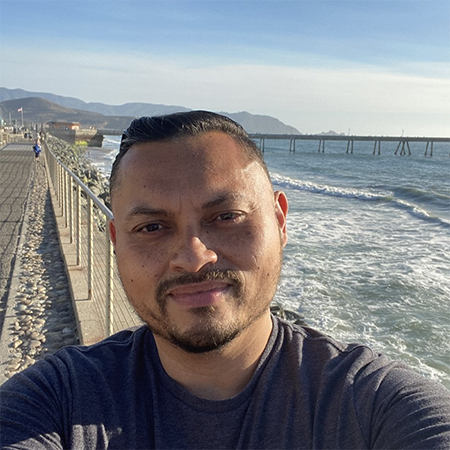
Meet Mario! Mario (he/him/his) has lived in San Francisco for almost four decades and grew up in Glen Park and the Excelsior neighborhoods. In his daytime job, Mario helps jumpstart people’s career in civil service and trades in the wastewater and transit industry. In his free time, Mario helps to produce events with Carnaval SF, events which cultivate and celebrate the diverse Latinx community and preserve their cultures.
Mario was a part of the production team that helped spread the word about the great resources available at Carnaval SF this year over Labor Day weekend. Carnaval SF held a two-day health fair and provided residents in the Mission district with free COVID-19 testing, groceries, employment resources, and handed out free SF Environment reusable bags to all attendees.
Mario actively engages with public programs and services available to him in San Francisco to help protect the environment. He said, “Knowing that cars are harmful to the environment, I stopped driving four years ago and have since chosen public transit and walking as my main modes of transportation. I turn unused lights and water off to save electricity and water. I also recycle and compost at home."
Conscious of how food consumption and production impacts the environment, Mario grows and tends his own tree garden including three plum, two pear, two apple, and a lemon tree. When the trees bear fruit, he loves sharing the fruit with neighbors and friends to avoid food waste.
Mario made these choices to be a part of the climate crisis solution–to make a positive impact on his and his loved ones’ health, finances, and peace of mind. To live a healthy life, Mario says we need to take care of our environment and each other to ensure food and other necessary resources are available to all.
Mario’s favorite spot in San Francisco: Glen Canyon Park. Growing up by the park, Mario always enjoyed the trails, sitting on a giant rock to look at the tall trees, and walking under the trees observing the plants and butterflies near the creeks.
Claudia Espino
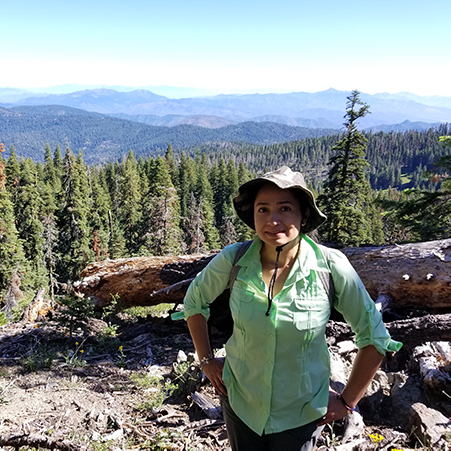
Meet Claudia, Claudia Espino (she/her/hers) has been with SF Environment since 2009. Claudia is an Energy Efficiency Coordinator on the Energy Team helping residents save money on their energy bill, minimize energy waste, and lower their environmental impact to combat climate change.
In June, Claudia pivoted to support the City of San Francisco’s COVID-19 response as a Bilingual Contact Tracer. As a Contact Tracer, Claudia contacted individuals who may have had exposure to someone who tested positive for COVID-19. She interviewed individuals and provided them with self-quarantine guidelines. She also provided additional information needed for testing and other city social services like food assistance.
The hardest-hit demographic in San Francisco is Latinx, and almost all of Claudia’s interviews were conducted in Spanish. Claudia empathized as she listened to residents recount their stories. As a Latina immigrant from Mexico City, Claudia related to the interviewees’ struggles and worries because she experienced similar financial struggles growing up. Some residents even shared home cold remedies, reminding Claudia of her mother nursing her back to health with tea and rubbing her chest and back with peppermint ointment.
As Claudia’s role involved helping some of the most vulnerable and challenged residents in the Latinx community during the pandemic, she always approached her conversations from a place of compassion. On the calls, Claudia made a concerted effort to exude positivity, hope, and empathy through her tone and responses to help uplift the interviewee’s spirits. Claudia used her personal experience, language, and interpersonal skills to build trust and connect with individuals to get them the support they needed.
Thank you, Claudia, for leading with empathy and compassion!
Claudia’s tip for the community:
“Whenever possible, share health advice and positivity! Sharing hope and appreciation for what we already have, not what we lack, is necessary and valuable.”
Jocelyne Novoa
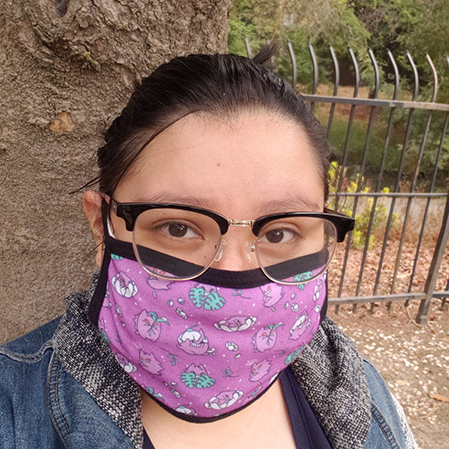
Meet Jocelyne Novoa! Jocelyne (she/her/hers) recently celebrated her 1-year anniversary on the School Education Team at SF Environment. In her role as Environmental Education Aide, she helps transform the school education curricula to be more culturally relevant and inclusive for the Latinx and Chinese community.
Since she was young, Jocelyne aspired to be an educator just like her encouraging teachers. As an educator today, she pushes the envelope to find ways to ignite students’ curiosity about their surroundings and environment. To do so, Jocelyne and the School Education Team have diversified the curricula by translating collateral and school presentations to Spanish and Chinese and incorporated English Language Learner (ELL) strategies like speech pacing, nonverbal cues, and visuals.
Jocelyne and her team’s goal is for students to learn sustainable habits, understand their impact on the environment, and feel like they are active members of the environmental movement. Jocelyne saw first-hand how language barriers impact her Latinx community growing up. Her classmates would miss out on portions of the lessons because they had to attend ELL classes and her parents struggled to help her with homework as English was not their native language. Jocelyne hopes that by removing language barriers, more students will having the opportunity and tools to further their sustainability education.
Jocelyne’s favorite San Francisco spot : The area near Pier 39. Jocelyne has fond memories of her family strolls through Great Meadow Park at Fort Mason and catching Pokemon Go!
Cindy Dzib
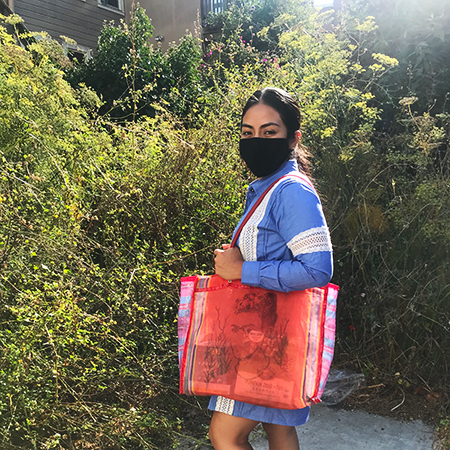
Meet Cindy Dzib! Cindy (she/her/hers) is a proud San Franciscan born and raised in the Mission District. In August, she celebrated her first year with SF Environment on the Communications team helping residents stay informed and inspired through SF Environment’s digital media channels, including social media.
Prior to joining SF Environment, Cindy had never identified as an Environmentalist. But in hindsight, she realized her experiences growing up contributed towards caring for and protecting the environment. Growing up in San Francisco, Cindy learned how to compost and recycle in elementary school and she participated in many school-led initiatives aimed at reducing waste like the beautification of classroom garbage cans. At home, she learned empty yogurt containers were not trash, but reusable containers to store leftovers. And when plastic bags replaced paper bags, Cindy and her family reused plastic bags as small garbage bags.
When the Checkout Bag Ordinance went into effect in 2013, Cindy was unbothered by the extra bag charge because her grandma had taught Cindy her old ways. She was reminded of the times when she would accompany her grandma shopping in the market during her visits to Yucatán, México. Her grandma would always bring a colorful reusable sáabukan — Maya for bag. Pictured, Cindy is carrying her favorite reusable bag — a modern take on a sáabukan. This is her favorite bag because it is easy to clean, the long handles support heavy groceries runs, and it reminds her of her grandma.
Cindy’s favorite spot in SF:
“Tank Hill. Tank Hill is one of my favorite SF spots because you get an amazing view of the City and it’s less crowded than other popular locations like Corona Heights and Bernal.“
Eduardo Portillo
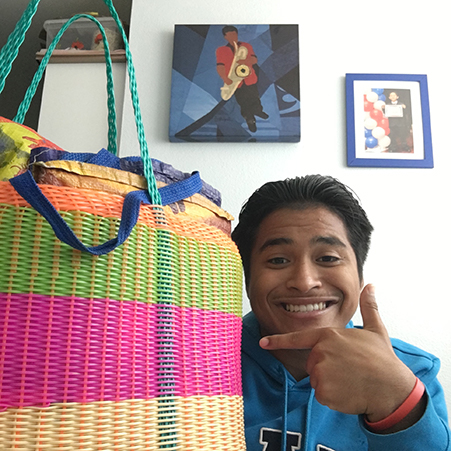
Eduardo (he/him/his) was born in Los Angeles and moved several times before moving to San Francisco in 2011. He graduated from Gateway High School this past June and will be attending San Francisco State University to study Civil Engineering in August. This was his third time participating in the City’s San Francisco Youth Works internship program. This summer was special because his internship at SF Environment this summer solidified his career aspirations to work at the intersection of sustainability and engineering.
For six weeks starting in June, Eduardo supported SF Environment’s Marketing and Outreach team. At first, Eduardo didn’t understand what Marketing and Outreach had to do with the environment as he was only familiar with more conventional environmental careers like conservation, policy, and energy, to name a few. This summer, Eduardo supported transportation demand management and learned about the importance of strategic communication and outreach to disseminate pertinent information to SF residents. Additionally, Eduardo strengthened his networking skills by conducting informational interviews and shadowing different teams at SF Environment, like the Zero Waste Construction & Demolition team.
Eduardo says his curiosity and yearning for learning is what contributed to his positive experience at SF Environment. He shared, “Ever since I got into Environmental Sciences, I’ve become more conscious of the world we live in and how the environment is impacted. This experience [at SF Environment] has impacted my life on a personal level because it answered questions I had. I constantly wondered how I could add an environmental aspect to Civil Engineering. Thanks to this internship, I discovered what I want to focus on: demolition and green building.”
Pictured: Eduardo sharing his favorite reusable bag. This colorful bag is his favorite because it’s durable and versatile. It can be used as a shopping bag or as a great beach bag as it allows the sand to flow through and making it easier to clean. This bag also carries a sentimental value because his grandma gifted it to him when she visited from El Salvador years ago.
Eduardo’s favorite spot in SF: “Lands' End -there's a bench on the side of a cliff that can only be reached by going off-trail. It's a nice place to meditate.”
Juliana Lamm-Perez
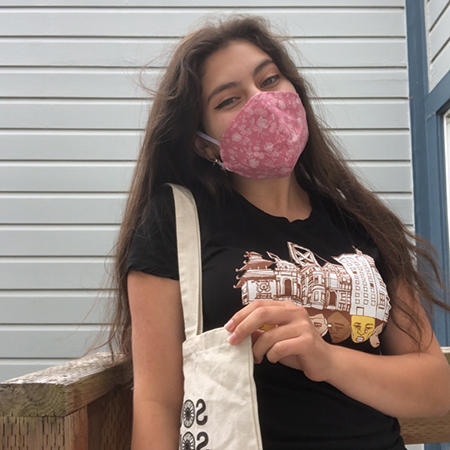
Meet Juliana Lamm-Perez(she/her/hers)! Juliana recently finished her summer internship with SF Environment as a San Francisco Youth Works Intern virtually supporting SF Environment’s Policy and Communications team.
Starting in June, Juliana spent six weeks learning about the actions we can all take to help the environment. She also gained insight into how City government and departments work. Part of Juliana’s responsibilities included finding articles and City legislation to share in a weekly departmental press update. Juliana learned a lot in six weeks, she said, “I learned a lot about SFE in general, but also about my City! In terms of clean energy and making the most out of our materials (recycling, compost), San Francisco is amazing! I’m so proud to call it my home.” Juliana took home new skills she can apply to future jobs, such as best communication practices with hard of hearing folks, social media marketing, and presentation skills. Additionally, Juliana has always been the go-to person for recycling and sorting questions amongst her friends and now, after her time with SF Environment, she’s become a zerowaste expert.
They say accessories can reveal a lot about your personality, so we asked Juliana to share her favorite reusable bag with us. Pictured is Juliana’s favorite bag—gifted to her at a women of color in independent schools conference.
Juliana’s favorite spot in SF: “Golden Gate Park! I live super close and there’s so much to do—whether it’s going to a museum, looking at flowers, having a picnic, or just enjoying nature.”
Jessian Choy
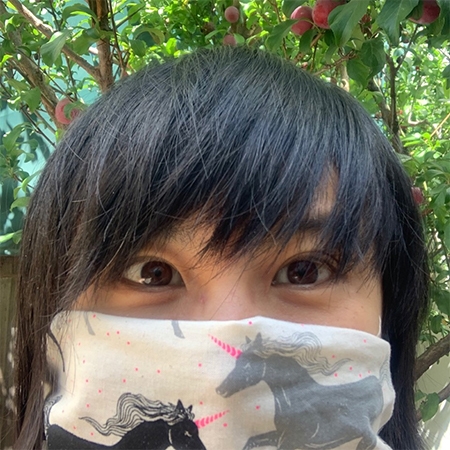
Jessian (she/her/hers) has been with SF Environment (SFE) since 2007 and is a City Toxics Reduction Analyst on the Toxics and Healthy Ecosystems team. Jessian works with stakeholders across City and County of San Francisco departments to adopt and implement safer practices in the disposal of toxic products, pest management, green product use, and green purchasing.
In April, Jessian served as a Disaster Service Worker at the SOMA CityTest Site. As Greeter, Jessian directed car traffic and guided cars through the test to get the individuals in and out in the most efficient way possible. In her short two weeks, she bonded with other SOMA CityTest Site staff and made friends with the security guards, custodians, and other City Staff. Of course, Jessian kept her Environmentalist hat on; as she made friends, she made sure everyone was up to date on the safer products for cleaning and SFE services and resources like SFApproved.org.
After completing her two-week assignment as a Disaster Service Worker, Jessian jumped back into action to support her team’s latest project with SF Environment. Jessian and her team developed a Safer Cleaning Guide for COVID-19. Many common disinfectants contain harmful chemicals, especially harmful for asthmatic folks, so they created tips for residents and businesses on where to find safer cleaners.
Jessian’s tip for the community:
Make sure you’re using cleaning and disinfectant products properly—read the instructions carefully. You might think that when you clean you're killing COVID-19 on surfaces, but you might not be. Or you might be using cleaners that can trigger asthma.
Mike Jenkins
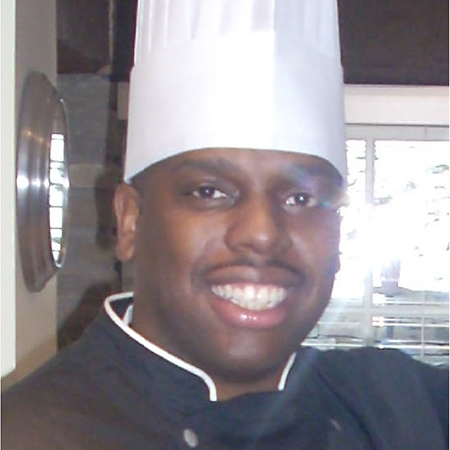
Meet Chef Mike! Chef Mike (he/him/his) has been the Executive Chef for the Zuckerberg San Francisco General Hospital for the past four years and oversees his department’s participation in the San Francisco Green Purchasing Program. As part of a City-wide initiative, all departments participate in San Francisco’s Green Purchasing program buying products that are safer for everyone’s health and environment. Chef Mike went above and beyond for the hospital’s patients and was recognized with a Buy Green Team Award in June.
Each year, Chef Mike serves half a million meals to patients at the General Hospital. Recently, under Chef Mike’s management, his kitchen switched to paper straws and installed two water stations, which resulted in saving thousands of plastic straws and 80,000 plastic water bottles from polluting our oceans. To him, a chef’s role is more than just making meals, he shared, “As a chef, we have a duty and part to play to keep the environment safe and clean.”
Chef Mike has played an integral part in laying a foundation at Zuckerberg General Hospital that will continue to leave an impact on human health and the environment for years to come. Chef Mike is grateful his purchasing power has a positive impact on his community. He said, “health and wellness are synonymous and as an Executive Chef serving our most vulnerable population, I am fortunate to have the opportunity to be very intentional about Green Purchasing and sustainability measures.”
Chef Mike is inspired by the Green Purchasing program because not only does it maximize operational costs, but it intentionally and strategically uses collective buying practices to influence vendors and manufacturing companies to adhere to sustainable practices that directly affect public health.
Chef Mike’s favorite spot in San Francisco: Green Apple Books and Schubert’s Bakery on Clement Street.
Kelly Gaherty
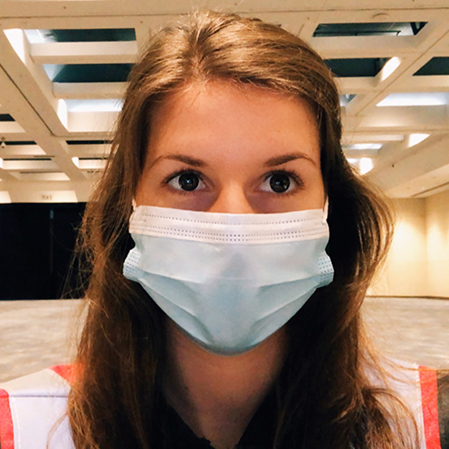
For the past year, Kelly (she/her/hers) has been a Green Business Associate on the Toxics Reduction and Healthy Ecosystems team at SF Environment. Kelly supports the San Francisco Green Business program, which provides sustainability resources to help businesses implement environmental practices in their day-to-day operations.
In April and May, as part of her Disaster Service Work (DSW) assignment, Kelly served on the Community Branch team at Moscone South. While on the Community Branch team, Kelly educated and informed San Francisco communities on COVID-19-related topics through online community engagement events. Working closely with community organization partners, district supervisors, and City departments, Kelly and her team organized multilingual webinars to address resident needs. Webinar topics included economic recovery loans, food insecurity, and mental health and emotional well-being, amongst others. Behind the scenes, Kelly managed the technical coordination along with community feedback.
Reflecting on her four weeks with the Community Branch, Kelly reiterated the importance of listening, “I learned how important it is to listen to the community and their voices—it's key to helping each other to make our communities stronger.” Quickly transitioning into a new role was challenging for Kelly, but she found her work developing efficiencies to advance the Community Branch’s work extremely rewarding.
Kelly’s tip for the community: Choose safer cleaning products and disinfectants. Common household cleaning products and disinfectants contain harsh chemicals that can cause harm not only to the environment but to your health.
Briana Zhen
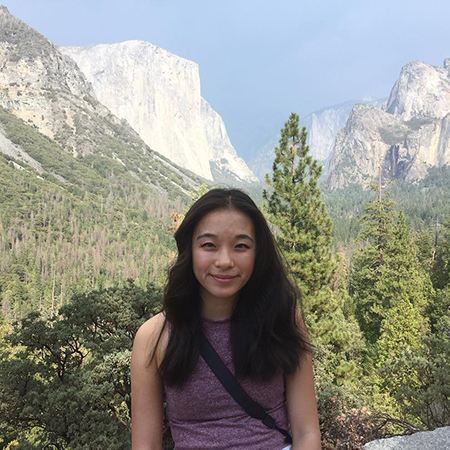
Briana (she/her/hers) has been a Residential Zero Waste Associate at SF Environment (SFE) for the past four months. As the SFE liaison for residents and property managers, Briana provides tools and resources to increase zero waste program participation to help SF reach its Zero Waste goal.
In May, Briana was deployed as a Disaster Service Workers to support the Community Branch (CB), which collaborates with San Francisco community-based organizations to address the challenges our most vulnerable residents are experiencing during the pandemic. Briana was tasked with synthesizing meeting notes, producing daily progress reports, managing spreadsheets, and creating an onboarding and offboarding process for new Disaster Service Workers.
Briana saw firsthand how CB incorporates equity into their operations and goals and inspired Briana to continue these efforts at SF Environment. CB’s work prompted Briana to reflect on the equity concerns surrounding the COVID-19 virus. She said, “The coronavirus has exasperated inequalities that already existed. We need to move towards a regenerative, inclusive society. "The coronavirus has exasperated inequalities that already existed. We need to move towards a regenerative, inclusive society. There is a lot of work to be done to combat COVID-19 and to address other crises like climate change, and it will take an intersectional approach to develop solutions for a more resilient SF. “
Briana’s tip for the community: Learn about food labeling. Use-by dates indicate when a product should be eaten. Sell-by dates inform retailers of the date the product should be sold by or removed from store shelves. Best-by dates are a suggestion for when a product should be eaten for best quality.
Rina Lopez
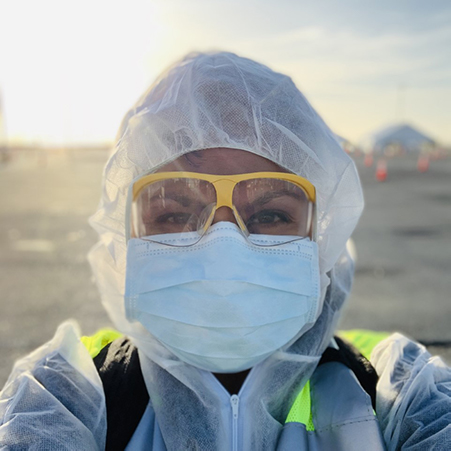
Rina (she/her/hers) has been with SF Environment for five years conducting audits and calculating ways to help SF residents save money on their energy bill by making their homes more energy efficient. In light of the current pandemic, Rina switched from speaking energy at SFE to speaking Spanish—the second most spoken non-English language in SF—as a Disaster Service Worker.
Since May, Rina has served as a Remote Bilingual Contact Tracer working alongside global medical experts and public health professionals to help reduce the spread of COVID-19. Rina works with COVID-19 positive individuals to identify those who could have possibly been exposed to the virus. She then follows up with the potentially exposed individuals to collect information about their demographics, medical history and symptoms, and details about their current living situation. After the first call, Rina asks them to quarantine for 14 days and then she follows up with a daily text or call to monitor their health and symptoms.
Rina’s work is essential in the City’s efforts to combat COVID-19 in an equitable way, a disease that is disproportionately affecting communities of color. Data shows Latinx and Black communities are among the most impacted by COVID-19 in San Francisco and the Greater Bay Area. Having Spanish-speaking staff like Rina on the Contact Tracer team is one way SF has been able to break down cultural and linguistic barriers to care for the Latinx community.
Reflecting on her experience as a Bilingual Contract Tracer, Rina shared, “Being a civil servant is a privilege. I have learned so much and am still learning from my experience working with colleagues to solve issues, update policies, and develop processes to combat COVID-19 as a City.”
Rina’s Tip for the community:
We must change our habits and slow down if we are going to continue living on this planet. Flattening the curve of climate change and environmental destruction is just as important as flattening the curve of COVID-19 cases. It’s a perfect time to formulate and refine your ideas and put the planning and strategy in place to make them happen. Consume less, waste less and enjoy life more!
Winnie Liu
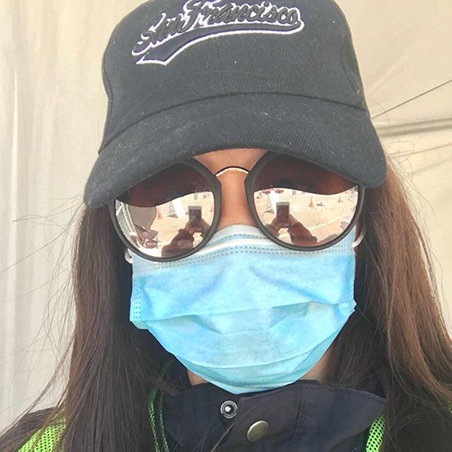
This is Winnie Liu’s (she/her/hers) first year with the San Francisco Department of the Environment (SFE) as an Environmental Outreach Aide. Winnie has served as a Disaster Service Worker (DSW) twice during the City’s COVID-19 response. In March, she was assigned to San Francisco’s Emergency Operations Center as an Outreach Coordinator and in April and May she served as a City Greeter at the SOMA CityTestSF site alongside other SFE colleagues.
For Winnie’s first DSW assignment in March, Winnie conducted residential door-to-door outreach to spread the word about the shelter-in-place health order. She also reached out to local essential businesses, such as restaurants and grocery stores, to reinforce social distancing practices amongst customers and workers.
In her most recent role as City Greeter, Winnie helped guide people entering the test site to reduce exposure. Although her City Greeter responsibilities were very different from her typical work as an Environmental Outreach Aide, Winnie commends her supervisors for making her transition as smooth as possible.
Reflecting on her two DSW experiences, Winnie is humbled to have seen, first hand, how the City operates and functions during a disaster. She shared, “As a City worker, I felt I needed to do my part to give back. I really hope that with our support, our City will go back to normal soon”. Winnie says that even in moments of exhaustion, a simple thumbs-up or “thank you” is all it took to re-energize.
Winnie’s tip for the community: Wear a mask when you go out. When you use a disposable one, put it in the black bin after use.
Monica Dwight
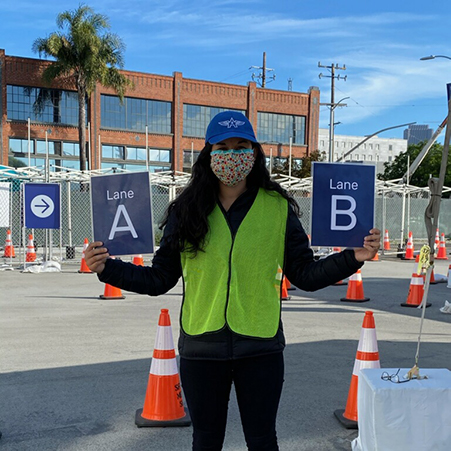
Monica (she/her/hers) will be celebrating her first year on the School Education team at SF Environment in August! As an Environmental Education Associate, she visits San Francisco K-12 public and private schools to conduct free presentations, assemblies, and trainings that support Ecoliteracy. But, just like the San Francisco School District, Monica and her team quickly adapted to shelter-in-place orders and shifted to an online format providing digital learning resources and live presentations.
During the month of June, however, as a Disaster Service Worker, Monica served as a Greeter at CityTestSF where she welcomed individuals who were looking to get tested for COVID-19. Monica used nonviolent communication that she usually uses in the classroom to provide strong customer service to individuals getting tested using big, clear motions to guide cars through the test site. Schools might have closed, but all of those hours practicing big arm motions for the Water Cycle Boogie did not go to waste!
Collaborating with other City departments and external partners to strengthen community resilience moved Monica. She said, “I feel really grateful for the opportunity to directly support our community on the frontlines during this pandemic. I’m a believer that tough times bring people together, so I feel lucky to be a part of a great team of people supporting an important cause. I’m reminded of this when individuals getting tested thank us for our service. In addition to the medical workers and my fellow City staff, I feel especially grateful for some of our lesser known heroes risking their health by working to maintain clean facilities and provide security for CityTestSF staff as well.”
Monica’s tip for the community: Monica shared, “During this pandemic I conducted a self-sustainability audit so that I can practice green purchasing when I must buy new products. Whether it’s watching a plastics documentary, making gifts by upcycling, or supporting activism for environmental justice, this is an opportunity to slow down and establish behaviors to live a greener life."
Jian He
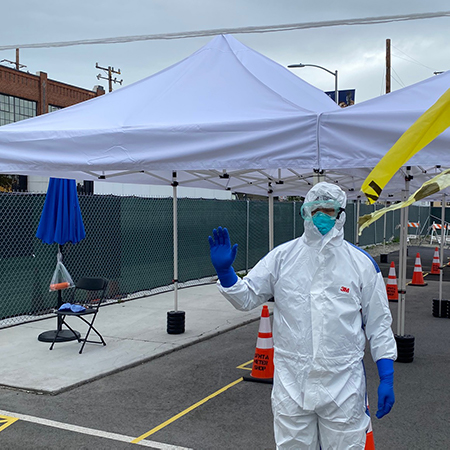
Jian He (he/him) has been with the San Francisco Department of the Environment for five years! As an Outreach Associate on the Environment Now team, Jian goes out into the community to educate residents about the department’s programs and initiatives. Through grassroots efforts, Jian and his team have engaged with more than 600 community members at recent events prior to shelter-in-place like the 20th Anniversary Community Clean Team event, Norcal MLK Day Health Fair, the YMCA’s Black History Month event, the Lunar New Year Celebration, and Chinese Historical Society of America’s Chinese New Year Celebration. It’s no wonder why Jian easily transitioned into his role as City Greeter for the CityTestSF SOMA COVID-19 test site.
Jian facilitated the COVID-19 test appointment check-in process making sure visitors had identification in hand, directing people to assigned waiting areas, and answering questions. Although his responsibilities were simple tasks, Jian took it upon himself to find ways to continue advocating for the SF community. Jian is always looking out for the community, which is why he made the testing experience more comfortable by requesting water and shade for residents in preparation for the hot weather. Soon after, tents went up at the site (pictured) to provide much needed shade for people!
Jian’s tip for the community: Unplug and limit your online consumption. Compost more!
Christopher Lester
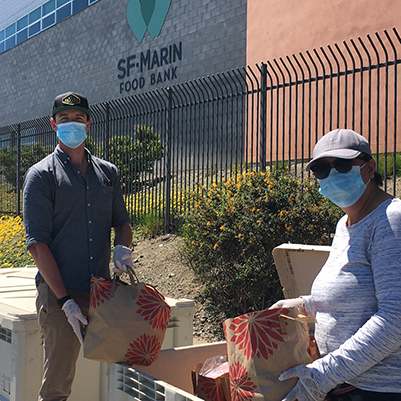
Christopher Lester (he/him) has been on the Toxics Reduction and Healthy Ecosystems team as Special Waste Disposal Analyst at the San Francisco Department of the Environment for the past 3 years. In response to COVID-19, during the month of April, Christopher helped staff the Food Bank's Home Delivered Groceries Program. Through the Program, volunteer drivers pick up pre-bagged groceries from the Food Bank warehouse and deliver them to residents who are unable to visit the Food Bank's public "pop-up pantry" food distribution events. While on assignment, Christopher worked with three other City employees from other departments like the San Francisco Public Library and the San Francisco War Memorial to staff the volunteer driver grocery pick up station. His team’s responsibilities included set up, driver check in, providing instructions and information, troubleshooting the delivery mobile app, and coordinating with warehouse staff to ensure enough groceries were available for scheduled pickups.
Christopher shared that this critical work strongly aligns with SF Environment's strategic goals of Strengthening Community Resilience and Amplifying Community Action. By partnering with the Food Bank, the City provided additional staffing to scale up grocery distribution at a time of tremendous need—when many residents are out of work, afraid, or unable to go to the grocery store. The Home Delivered Groceries Program’s mission is to serve the most vulnerable San Francisco residents who cannot or should not leave their homes.
Christopher was most struck by the impact a relatively small group of people made through collaboration, innovation, and simply showing up in times of need. Non-profit staff, City government workers, and volunteer drivers from the community worked together to make the program a success. The Food Bank quickly adapted its program for COVID-19 social distance guidelines. Fellow San Franciscans stepped up as volunteer drivers to give back to their neighbors. Together, the approximately 50 volunteers and staff helped hundreds of households have access to food.
Christopher’s tip for the community: “Now is a great time to rid your home of all the old, toxic products you no longer use! Clean out your garage, your medicine cabinet, under your kitchen sink, wherever you have them stashed away. And please don't put them in the trash, recycling, or compost! SF Environment and Recology have many free and convenient disposal options for you to safely get rid of them.”
Ciara Pringle
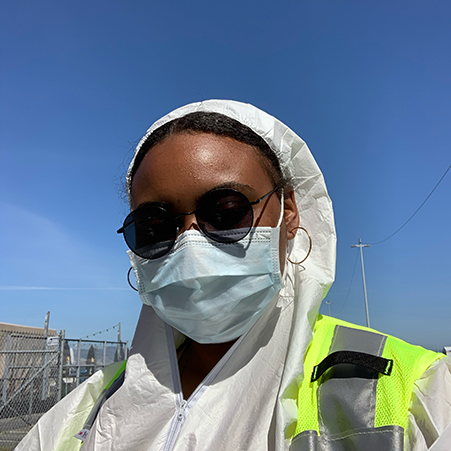
Ciara Pringle (she/her) has been a Residential Toxics Reduction Associate with the San Francisco Department of the Environment (SF Environment) for nearly two years. Ciara works with San Francisco residents to reduce their exposure to toxic chemicals to live a healthier life at home. Whether virtually or at an in-person event at one of the SF Public Library branches, Ciara is always ready to answer questions about making safer DIY cleaning solutions, identifying harmful fragrances, and opting for safer beauty products.
In April, Ciara switched gears to serve as a City Greeter for the city-run COVID-19 CityTestSF Center located at Pier 30. As a City Greeter, her role was to answer pedestrian questions about how or who can get tested, remind people to maintain a safe distance of at least six feet, and direct cars through the center. Although her regular job responsibilities changed, she was able to apply her public speaking skills to answer the numerous questions that came her way and she was able to build community with other department colleagues at the CityTestSF Center from SF Public Library, SFMTA, and the Port of SF. Ciara shared, “I felt well taken care of at the CityTestSF center. Every day I worked there, the CityTestSF Supervisors made sure there were masks, gloves, water, sanitizing wipes, suits (for entrance greeters), and very clean restrooms.”
Ciara’s tip for our community: Be kind to one another, be considerate to one another, and check-in with each other. Take this time to discover what really matters to you and stay connected with people. There are many people working many tireless hours (including the home fronts) that are trying to keep their lives and families stable. Everyone is affected by this pandemic, but there are many blessings that we can appreciate in the midst of this pandemic!
